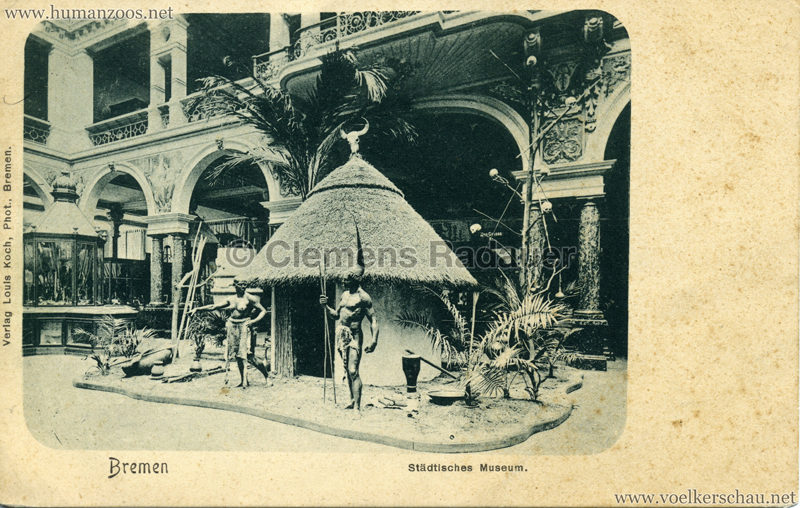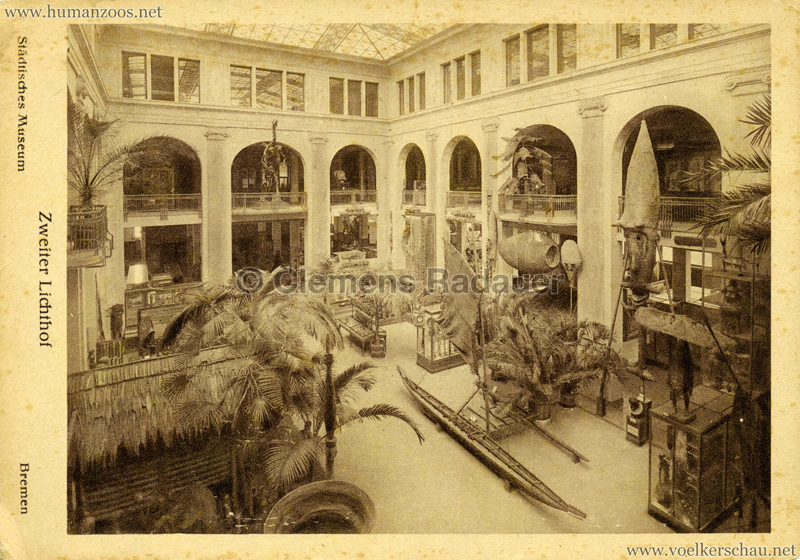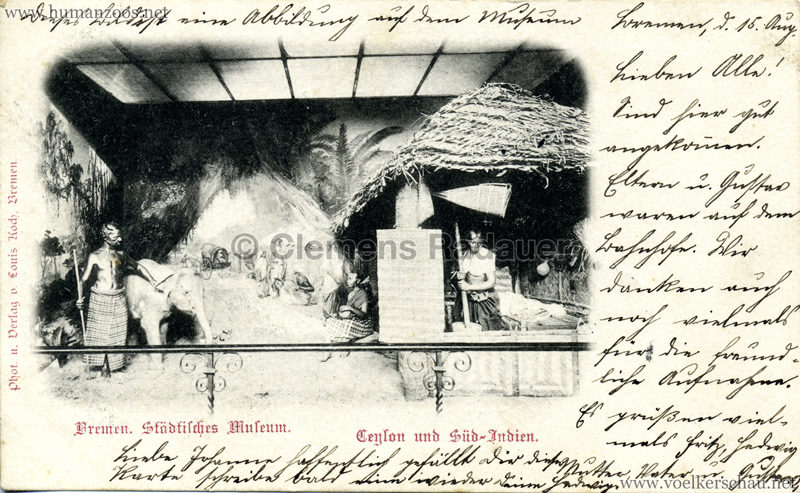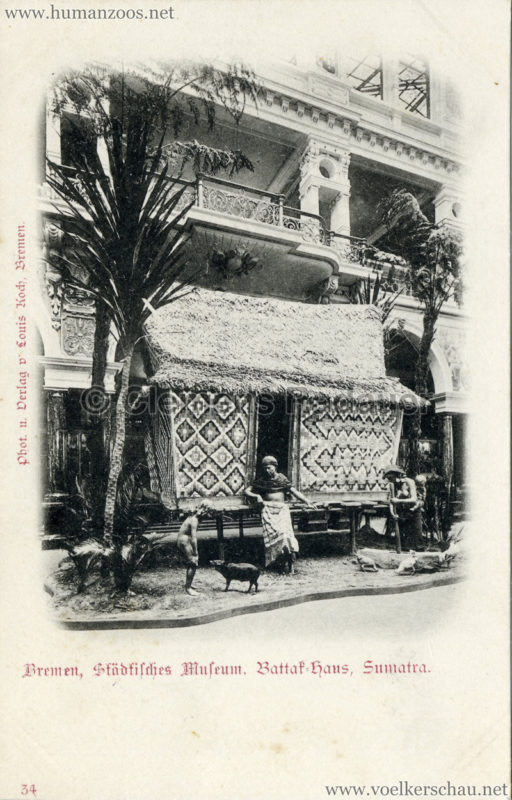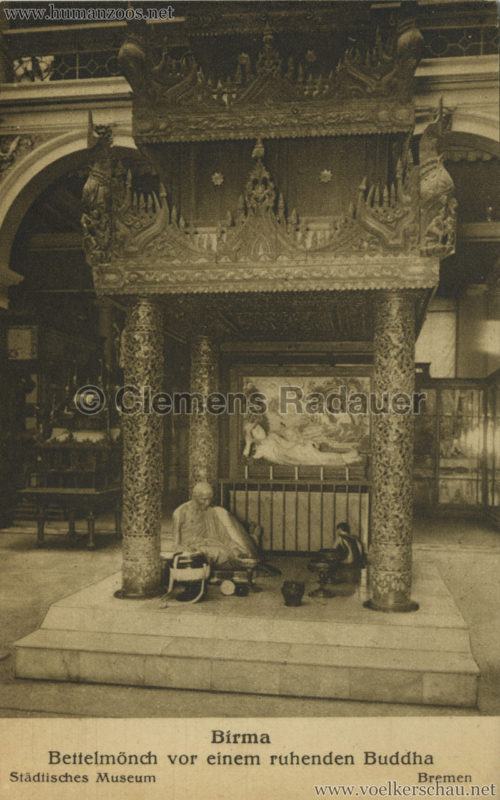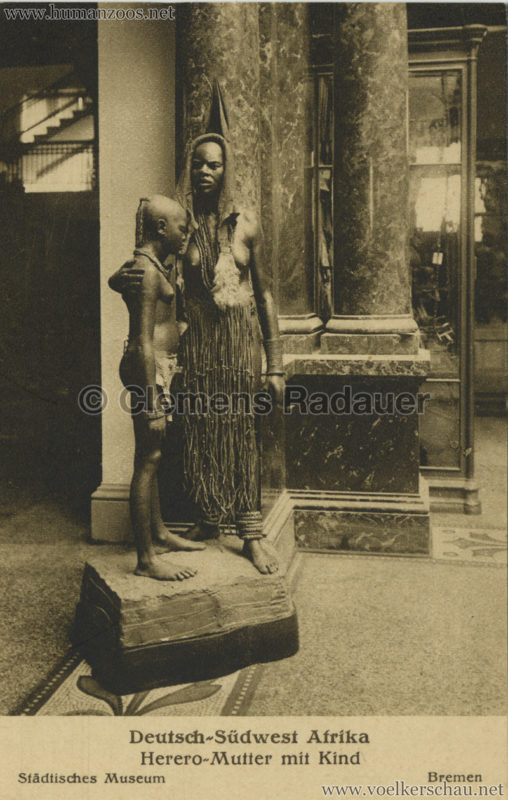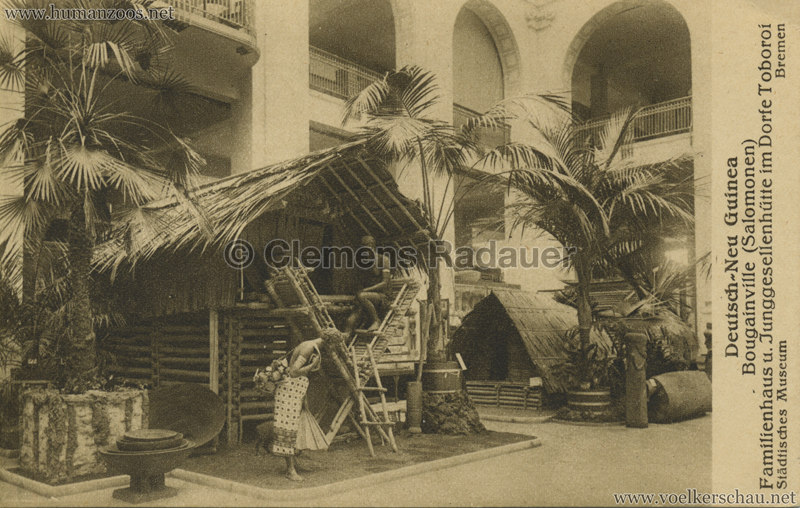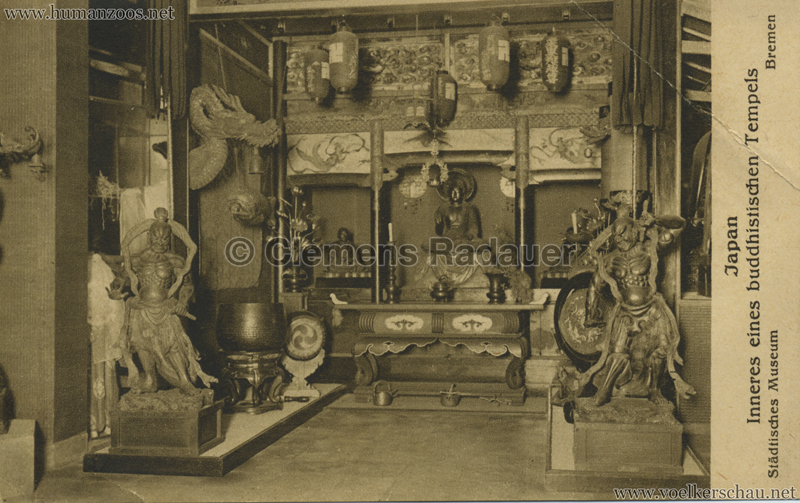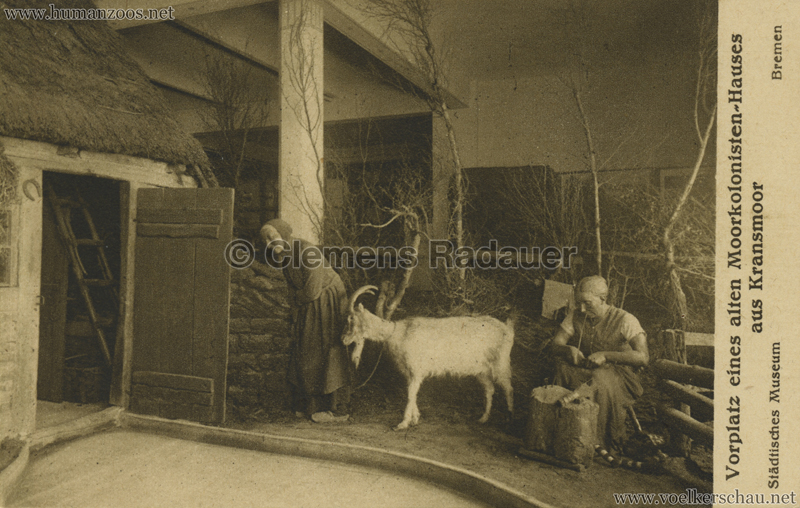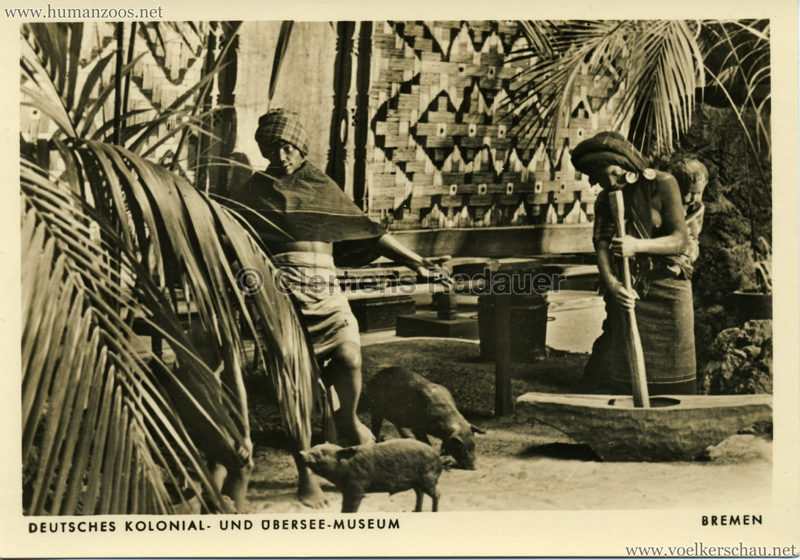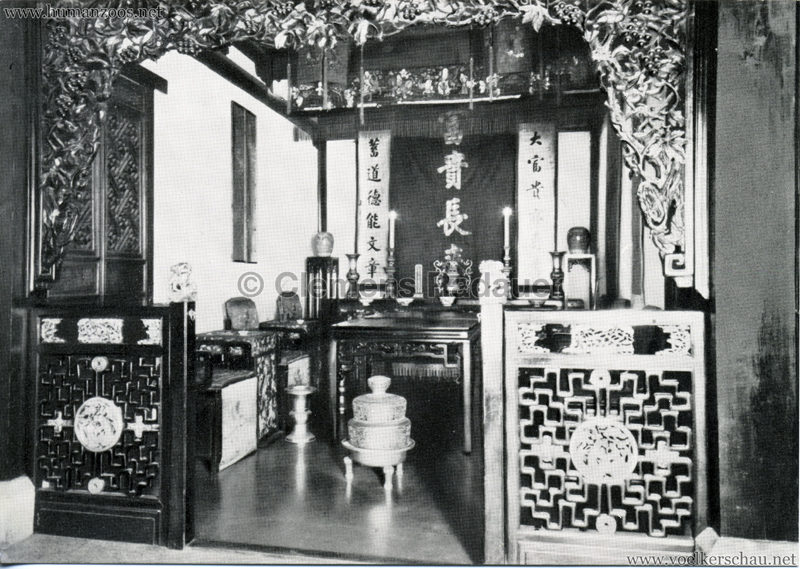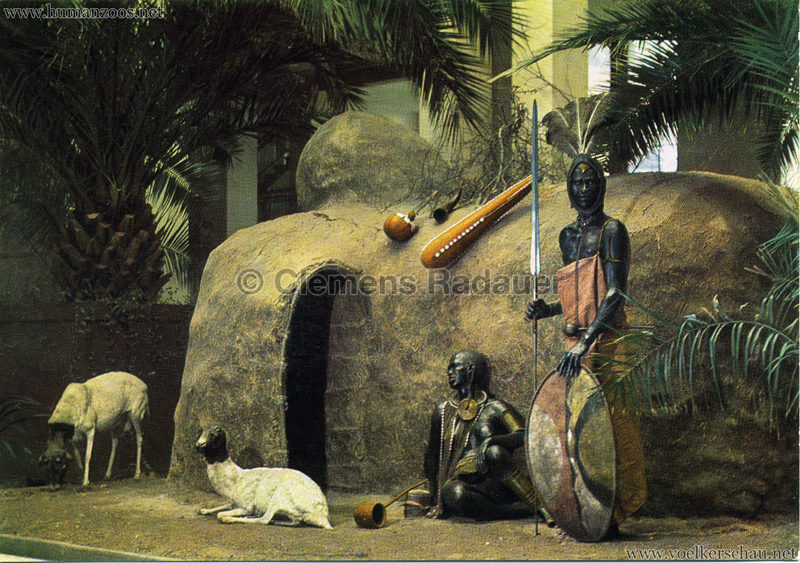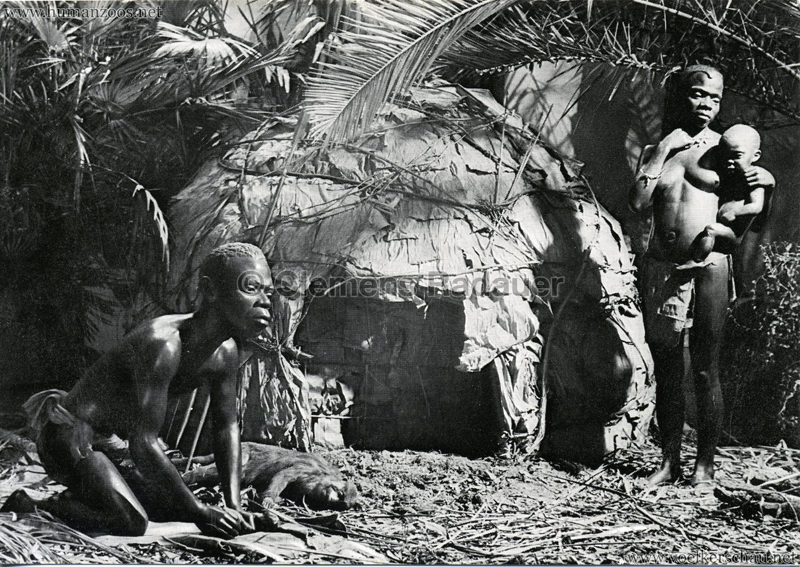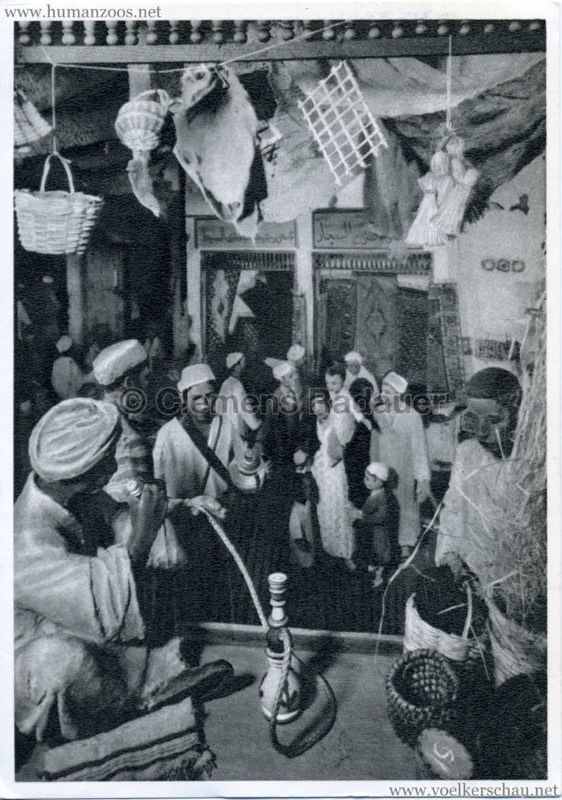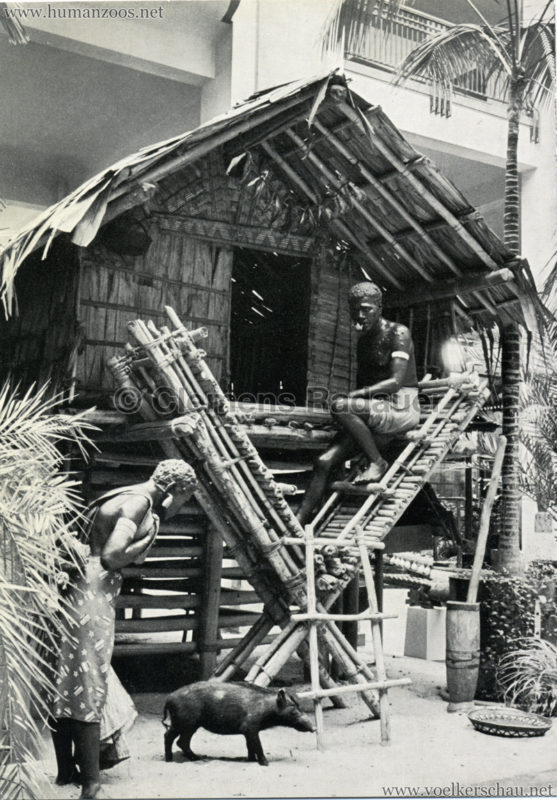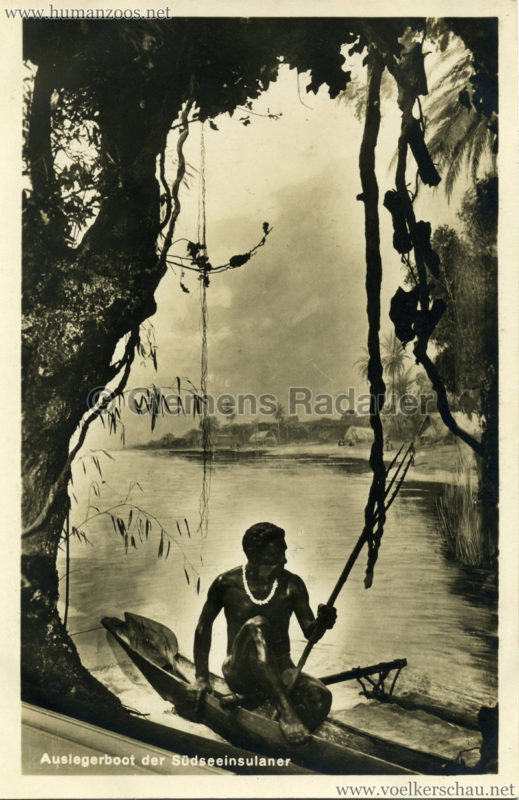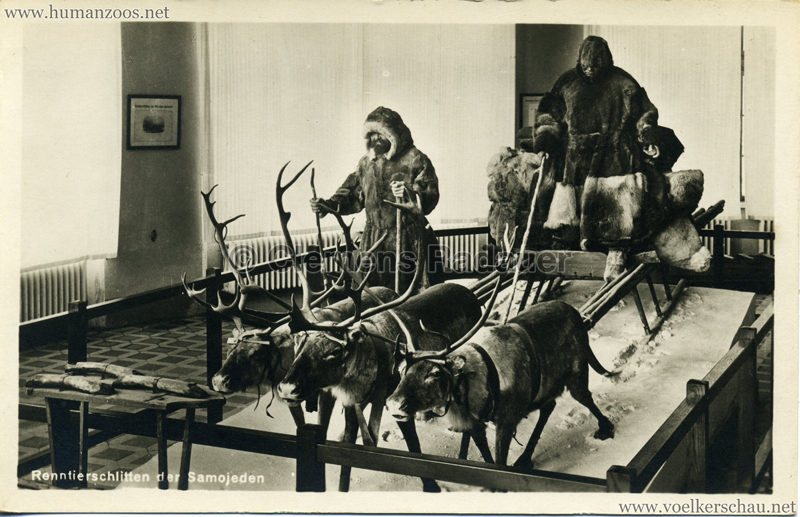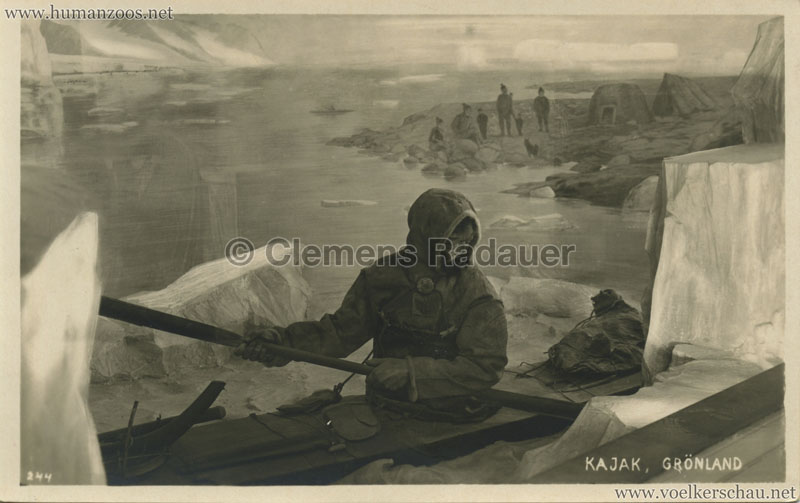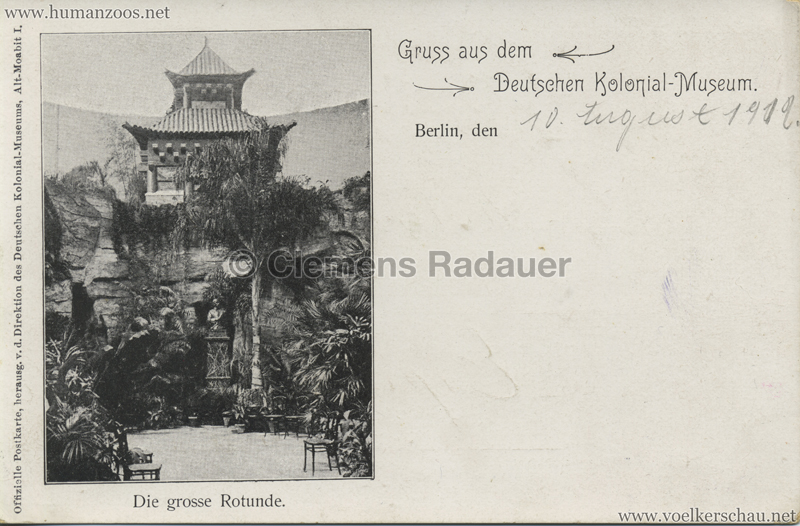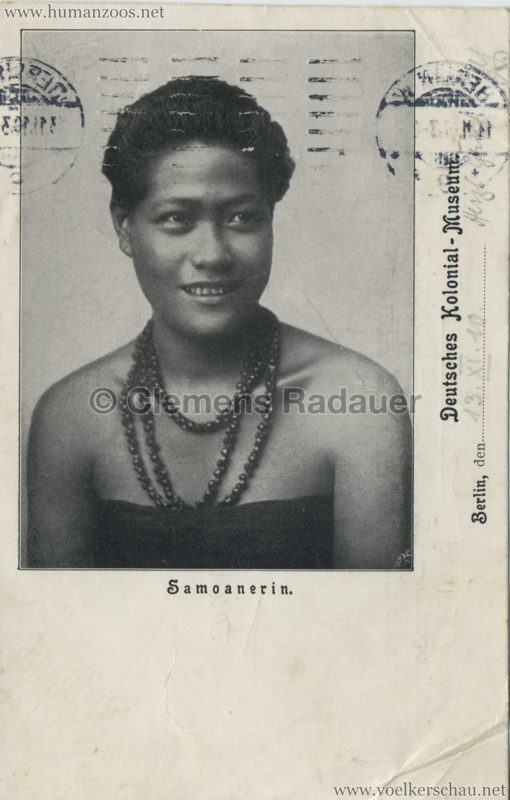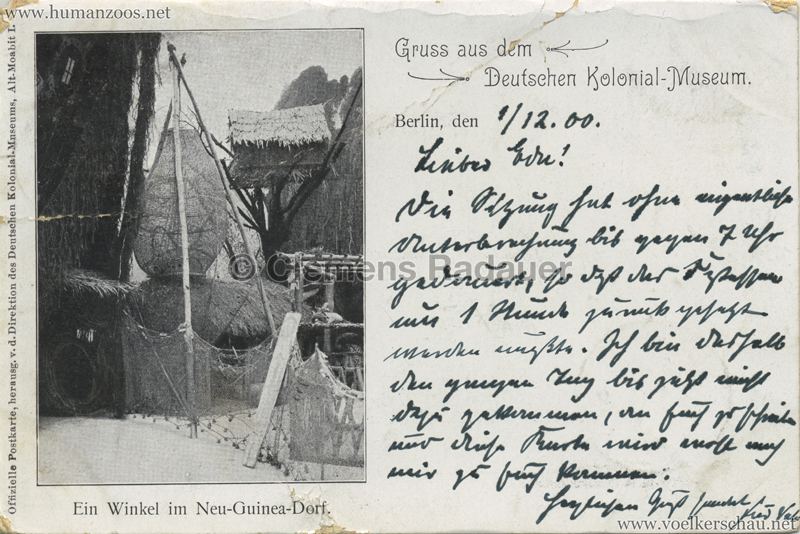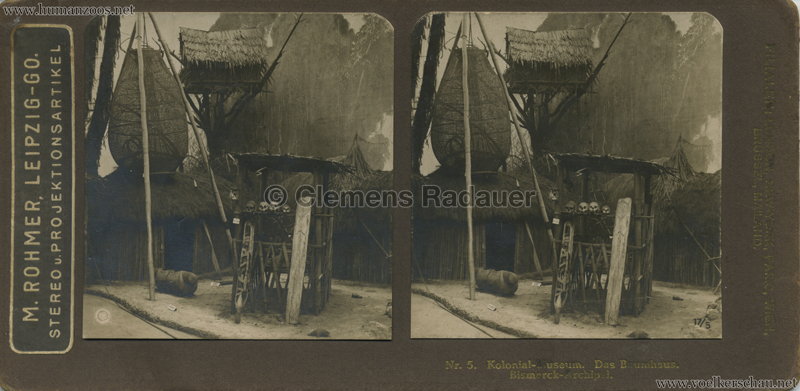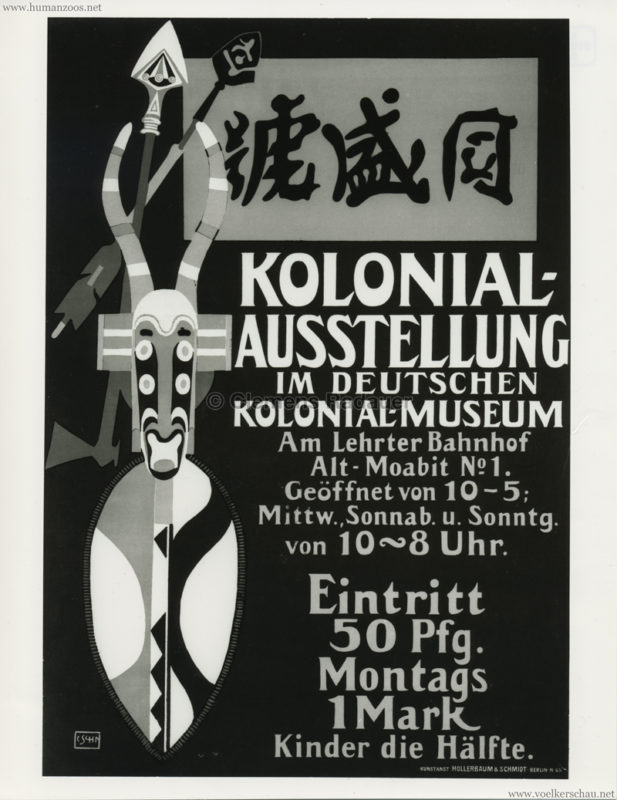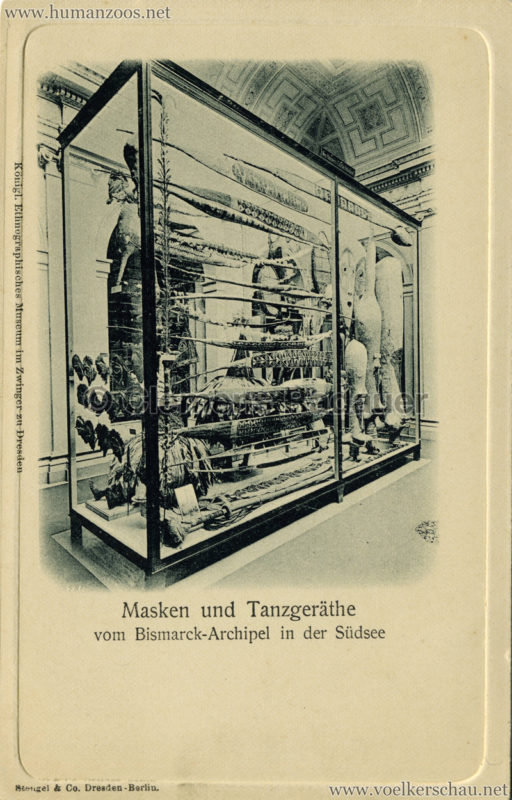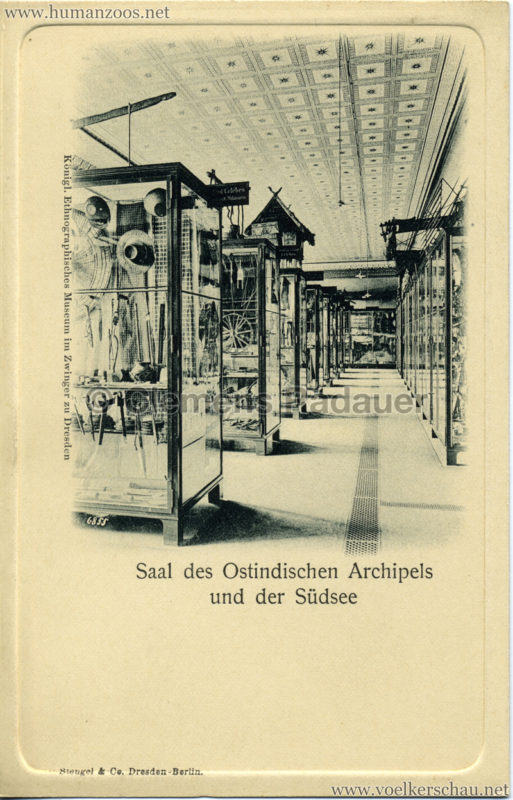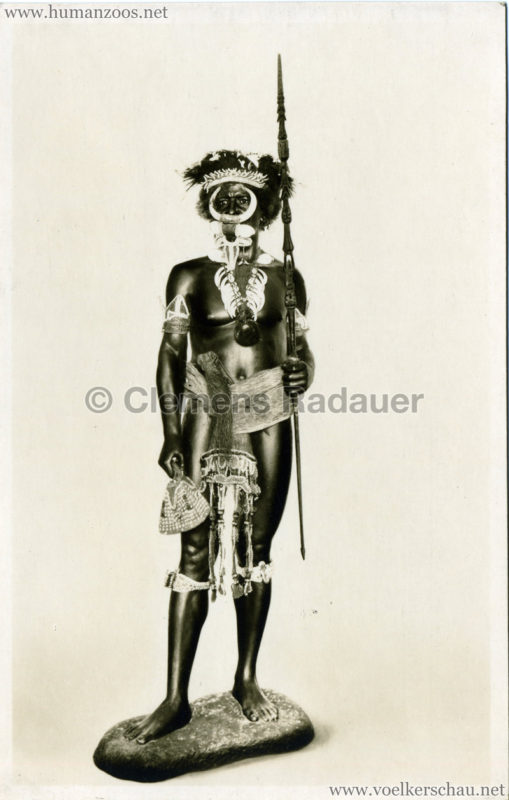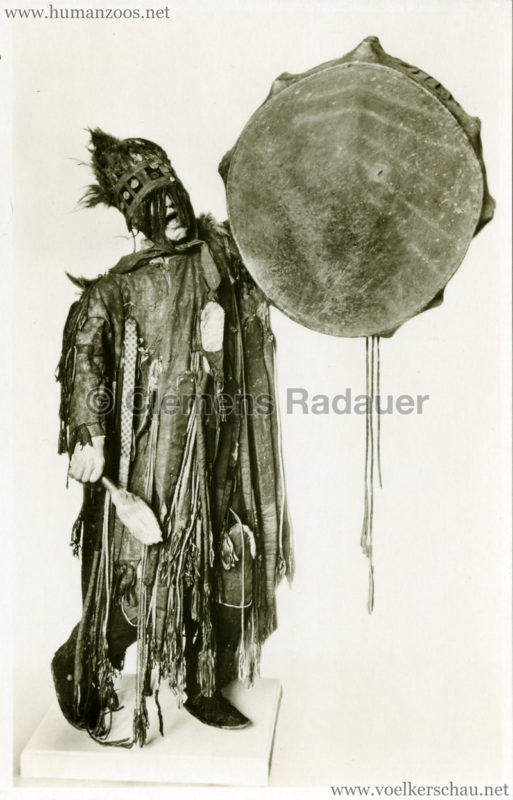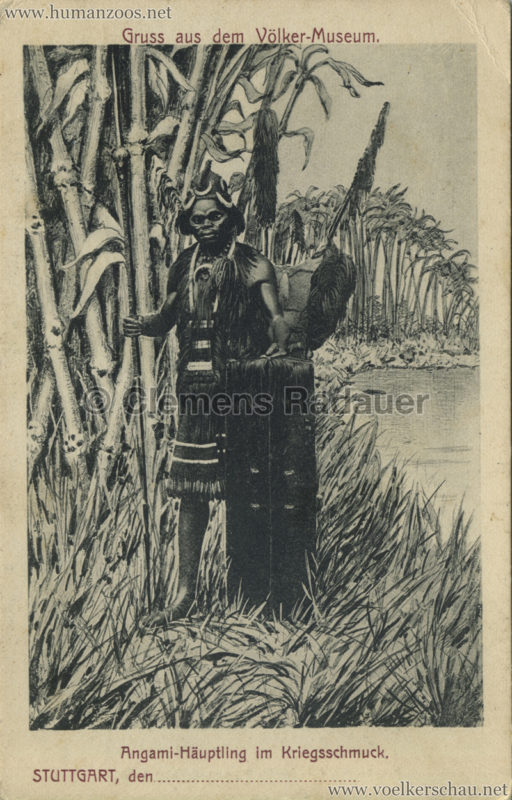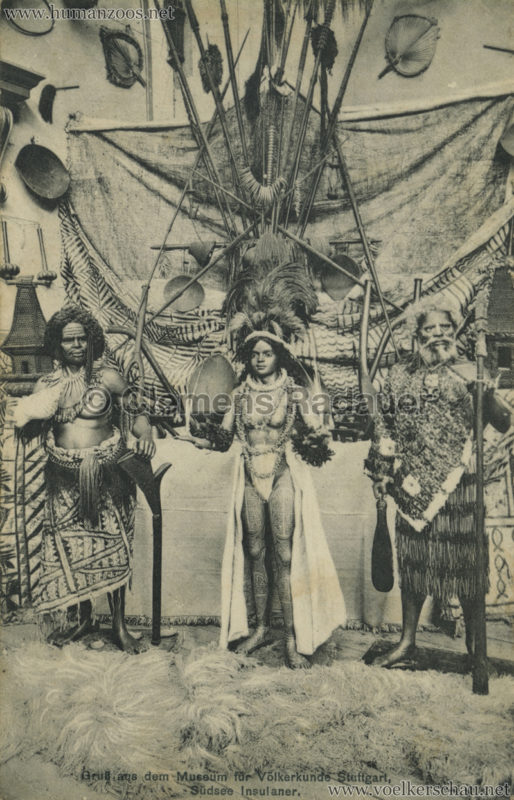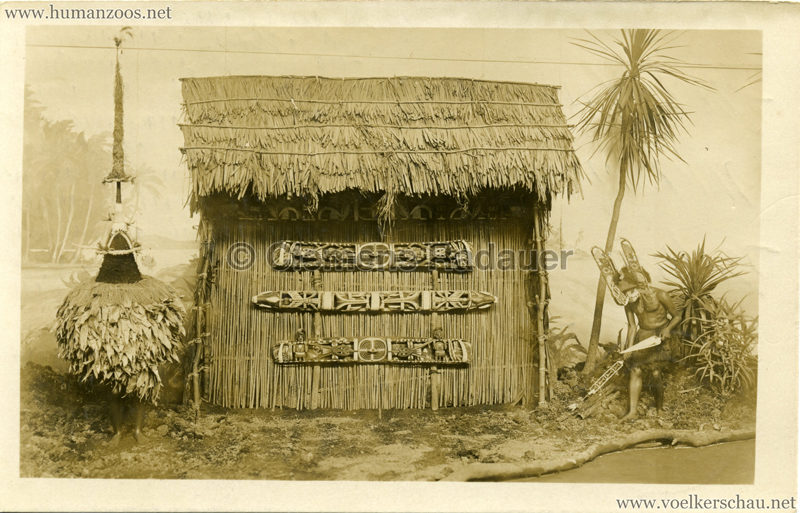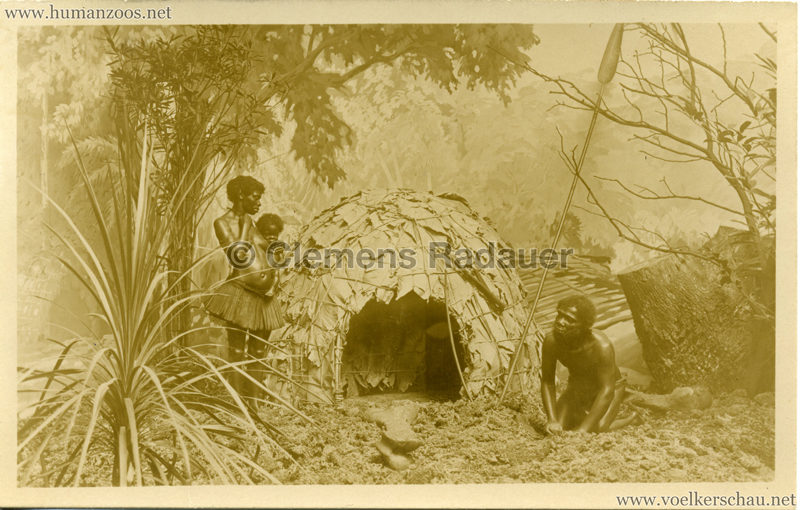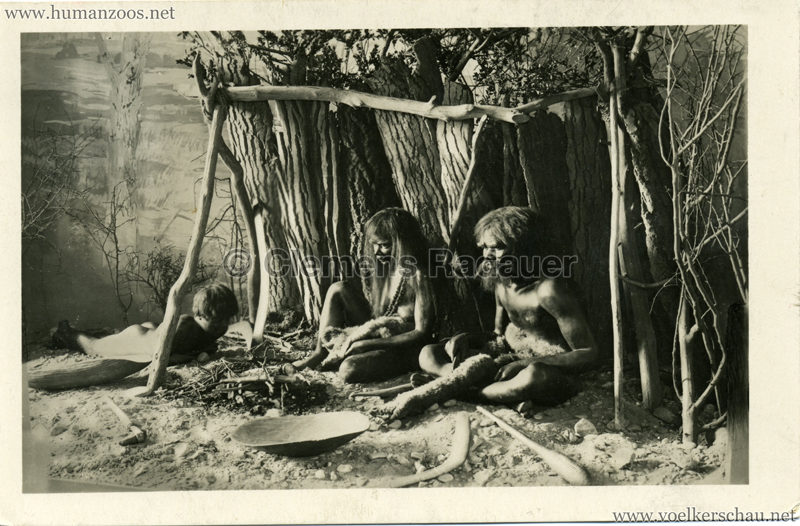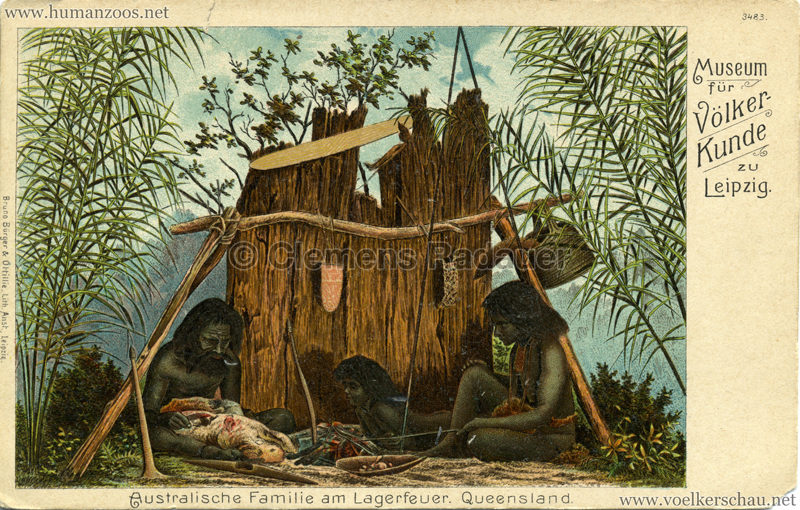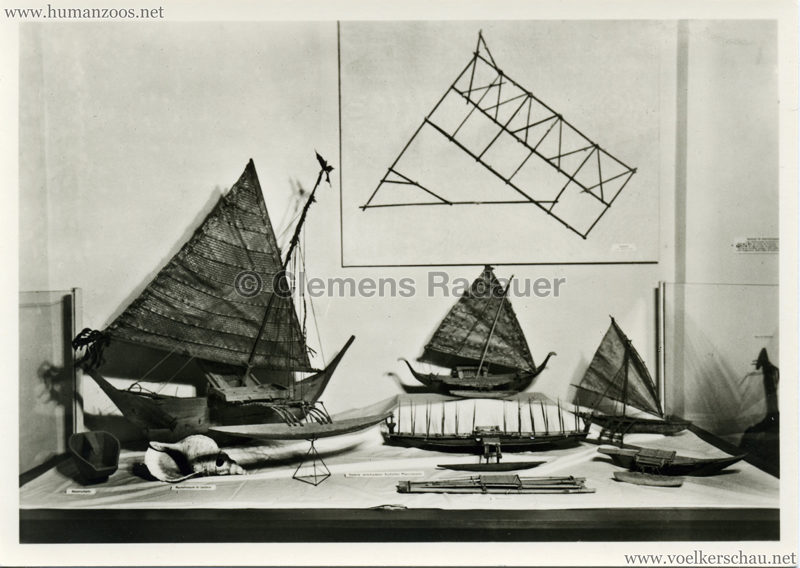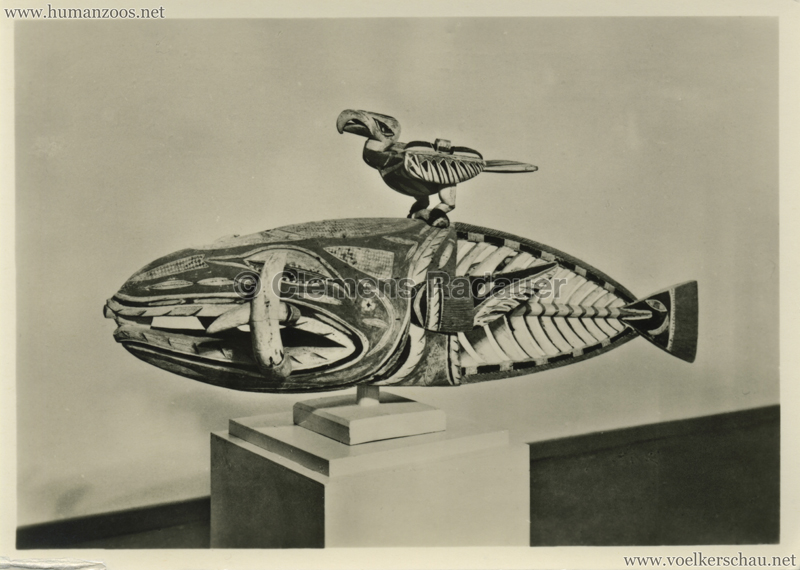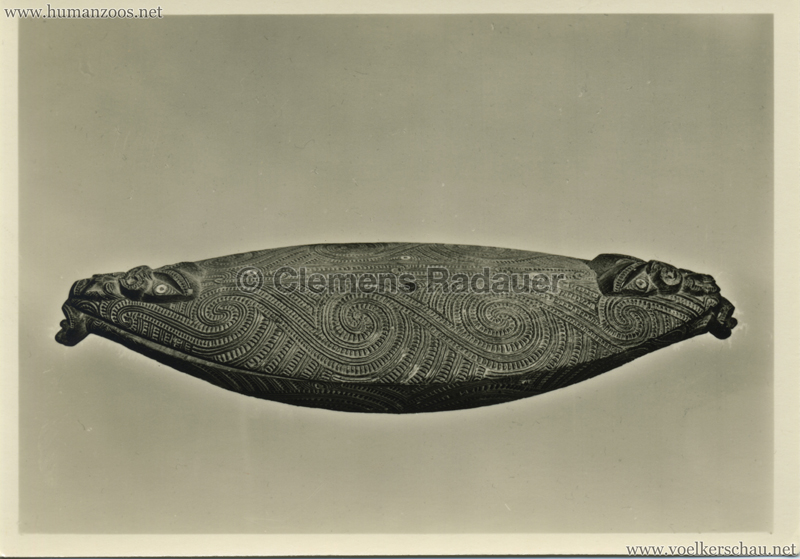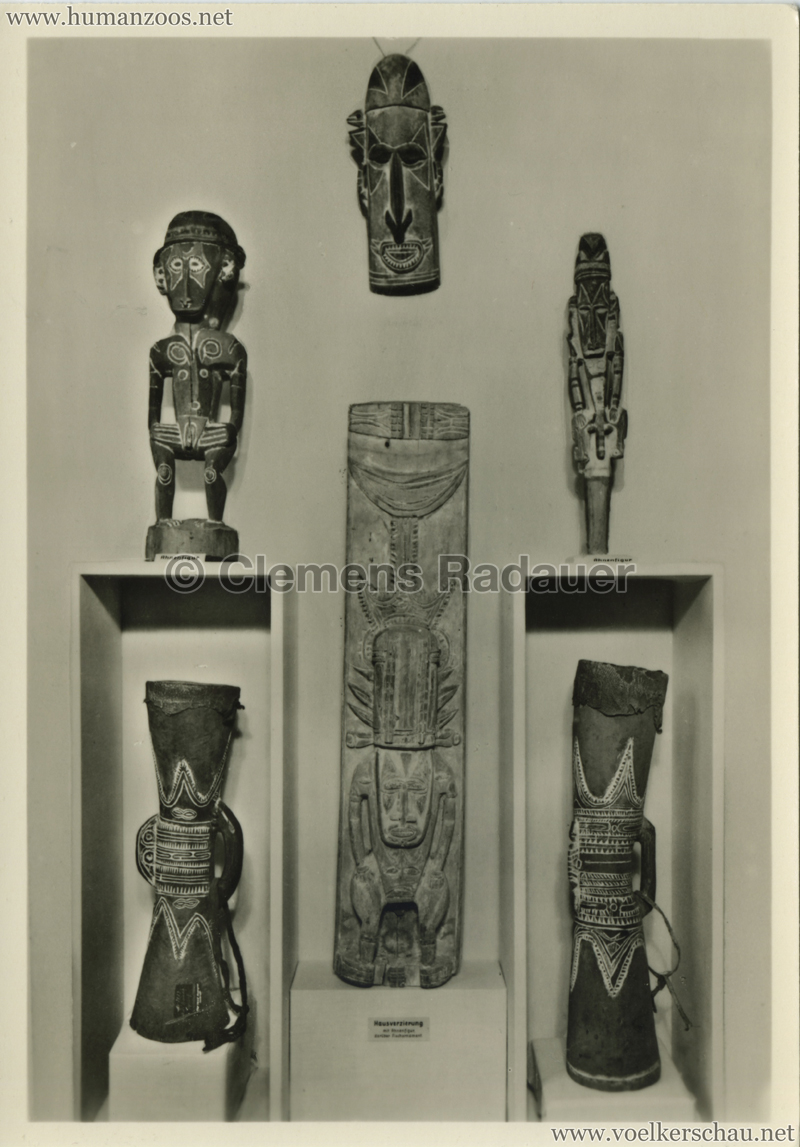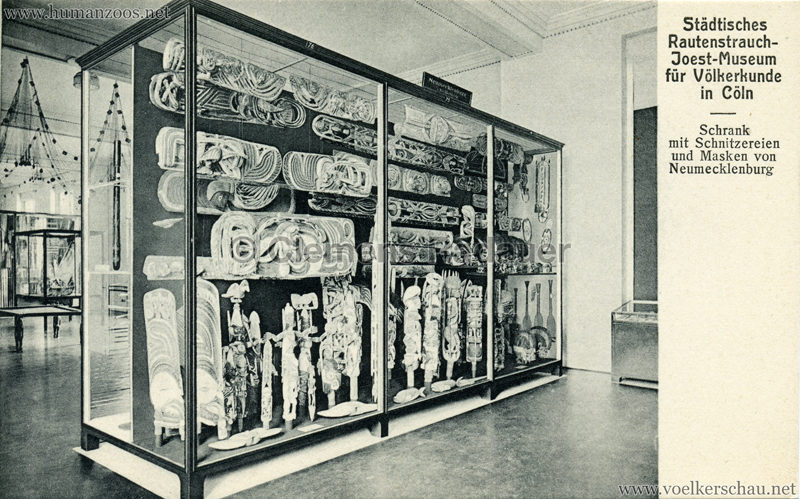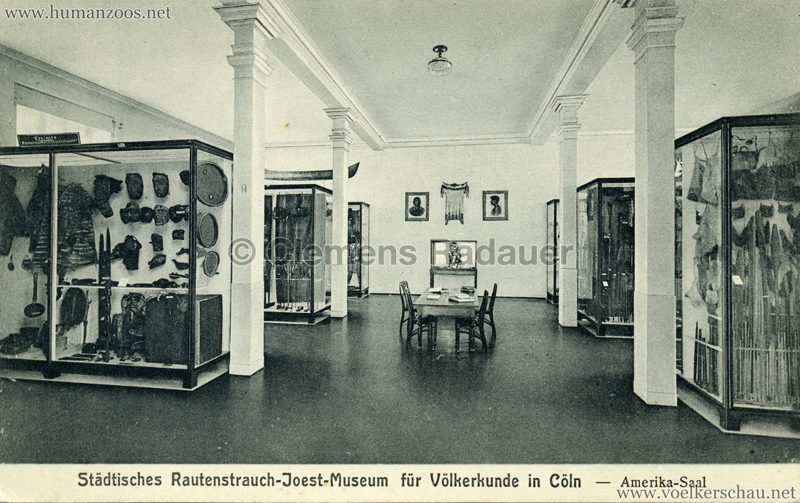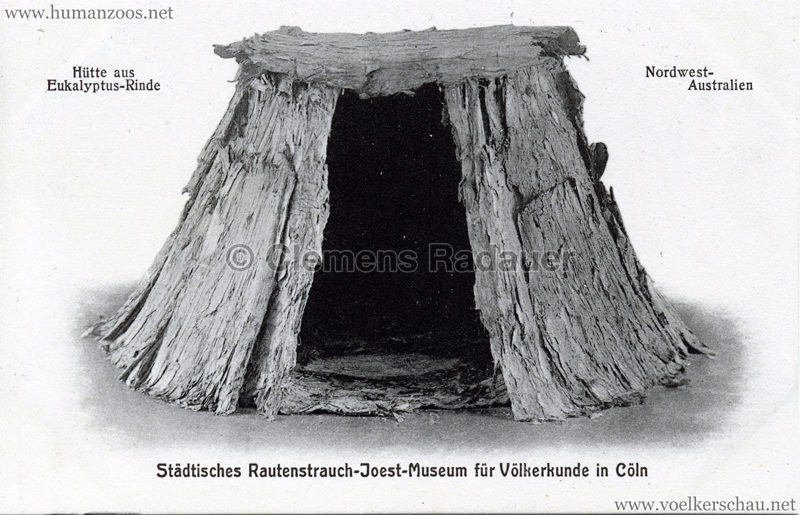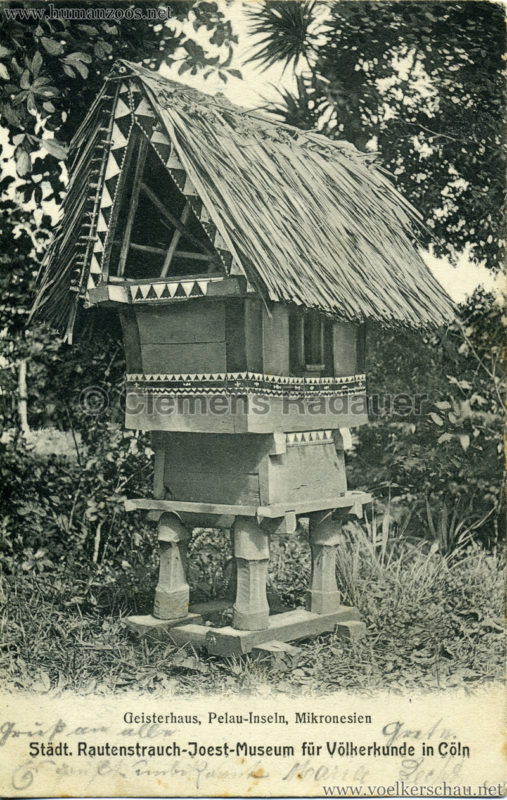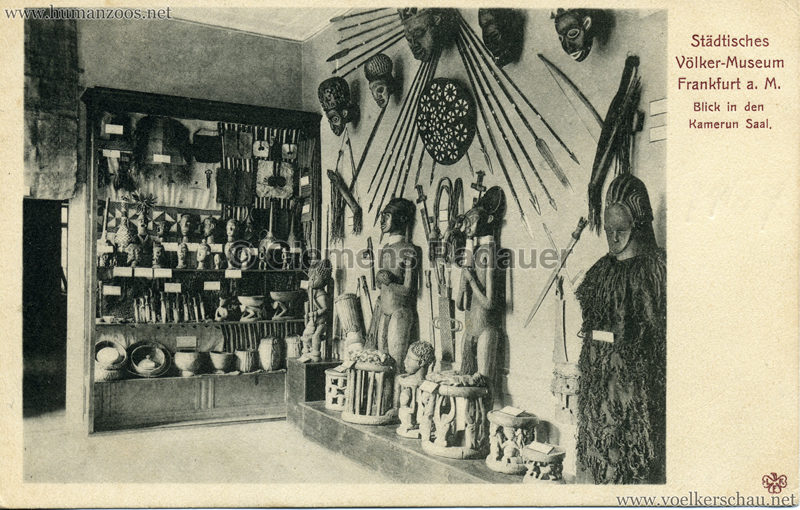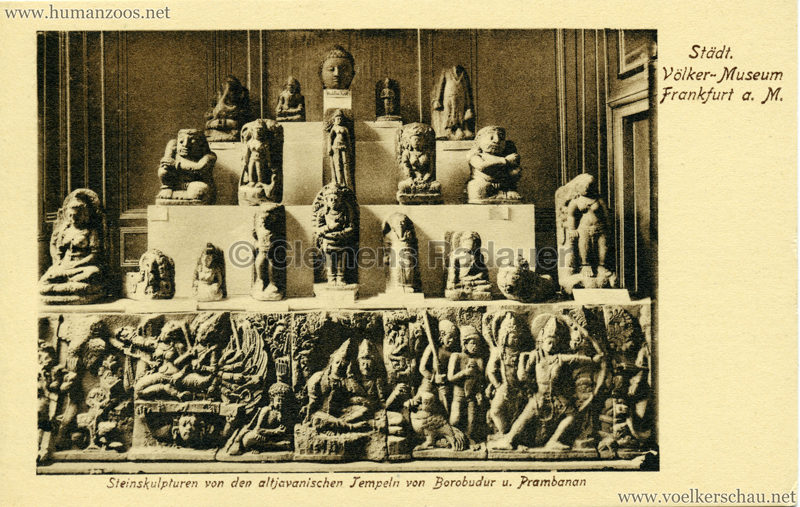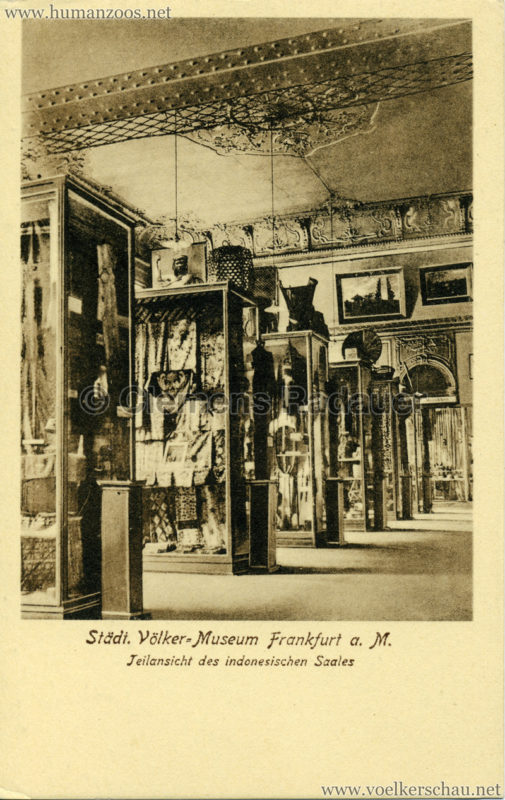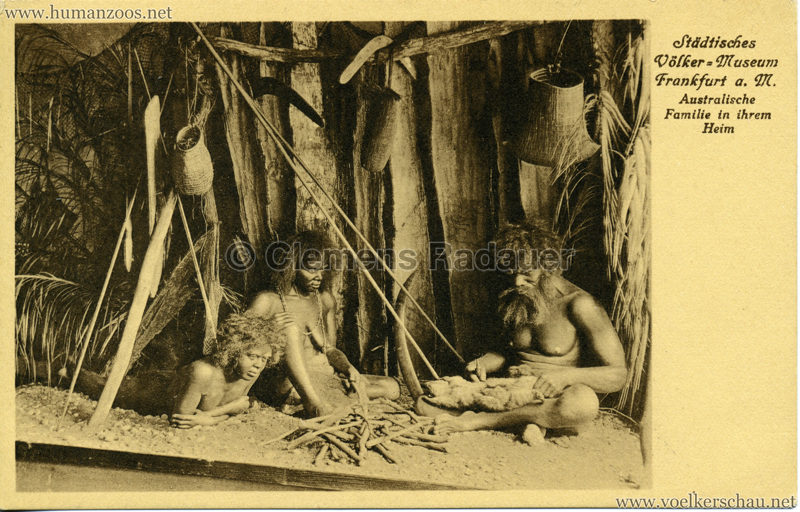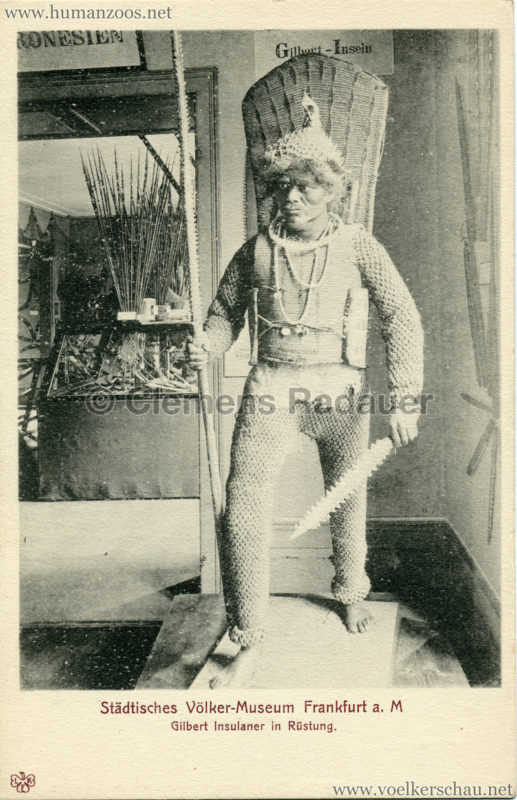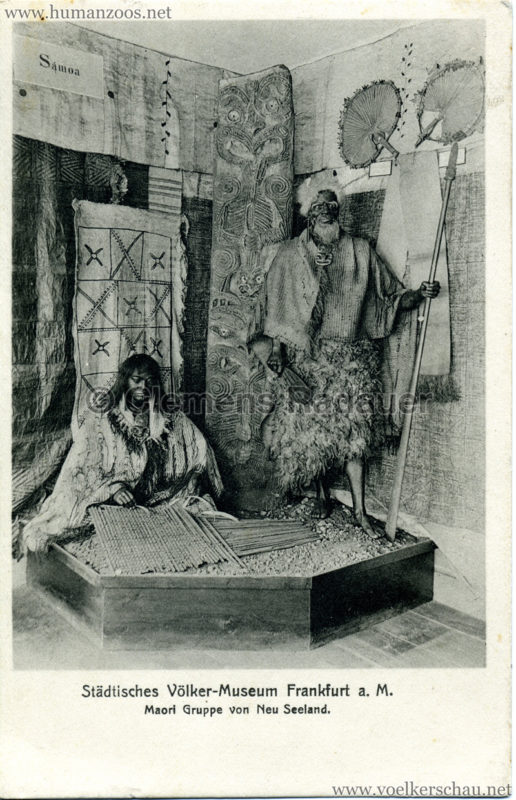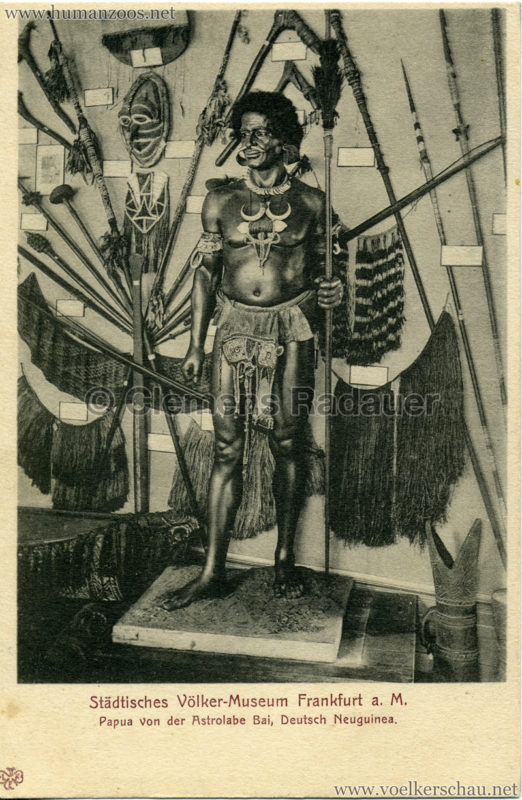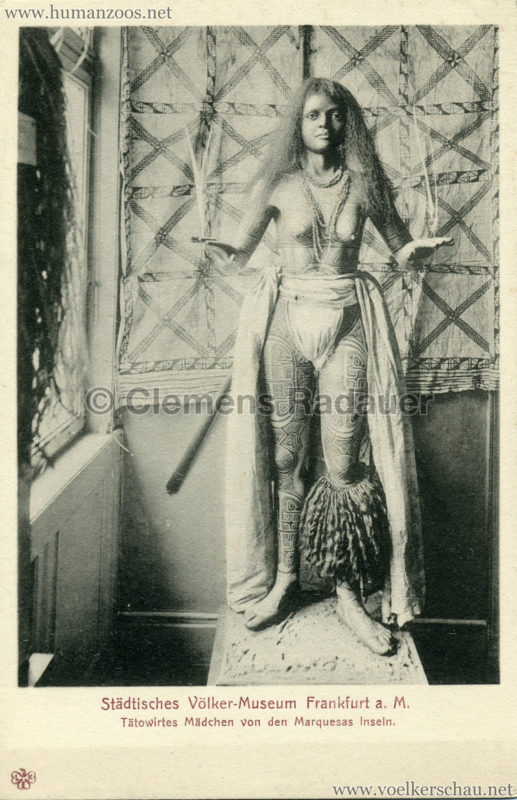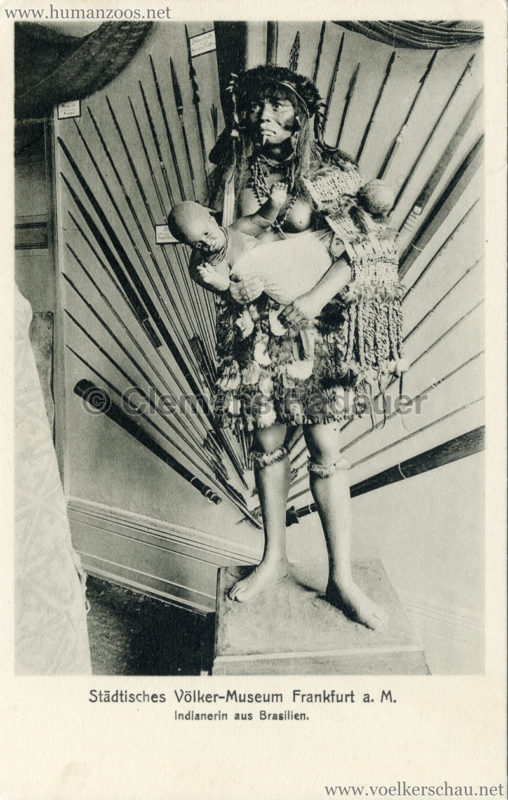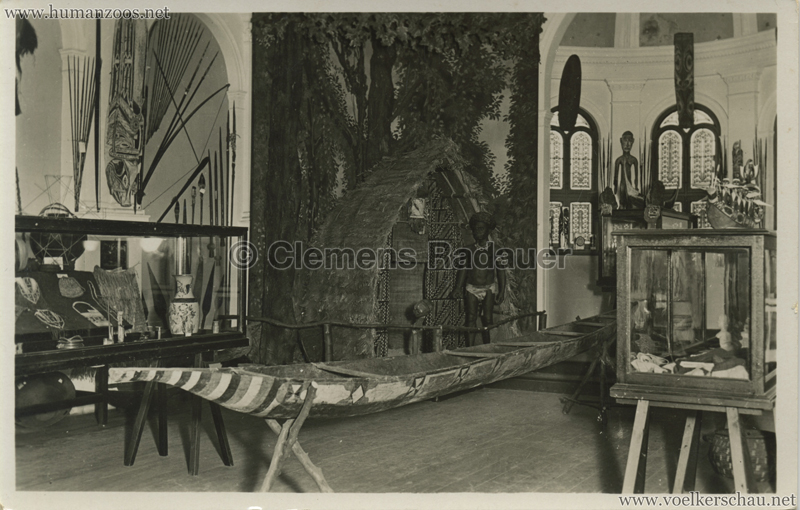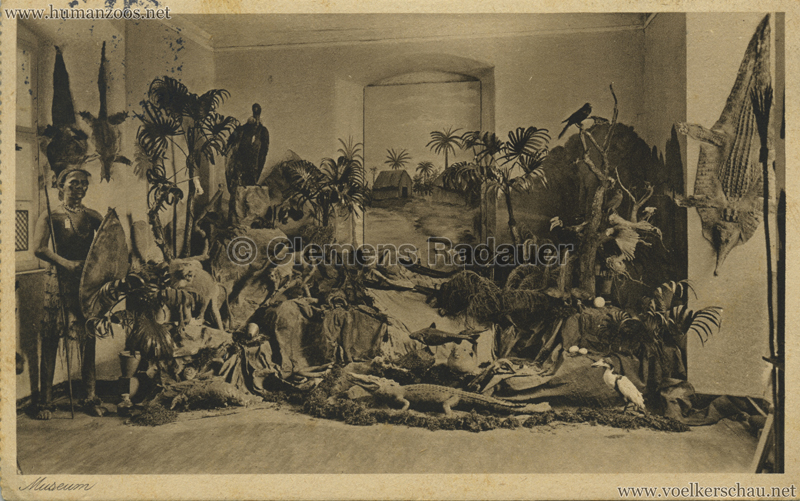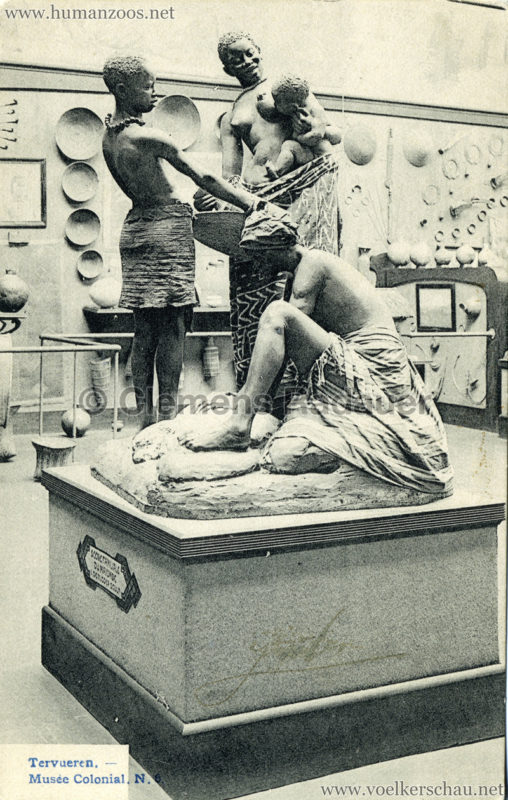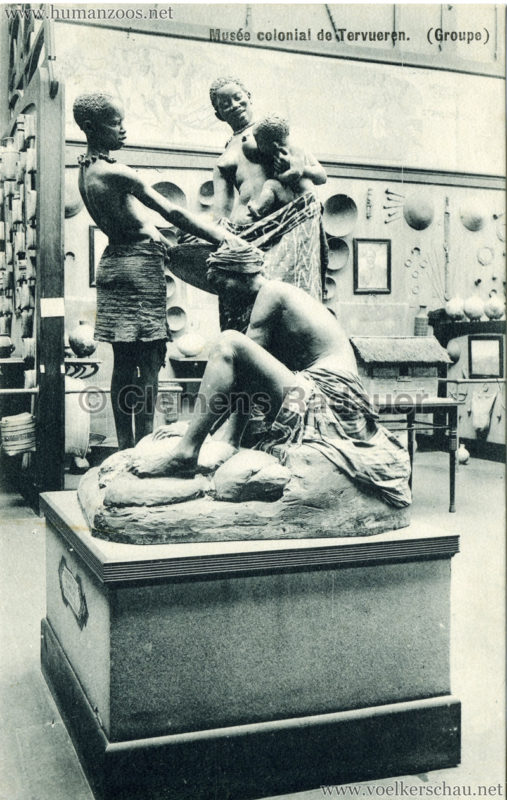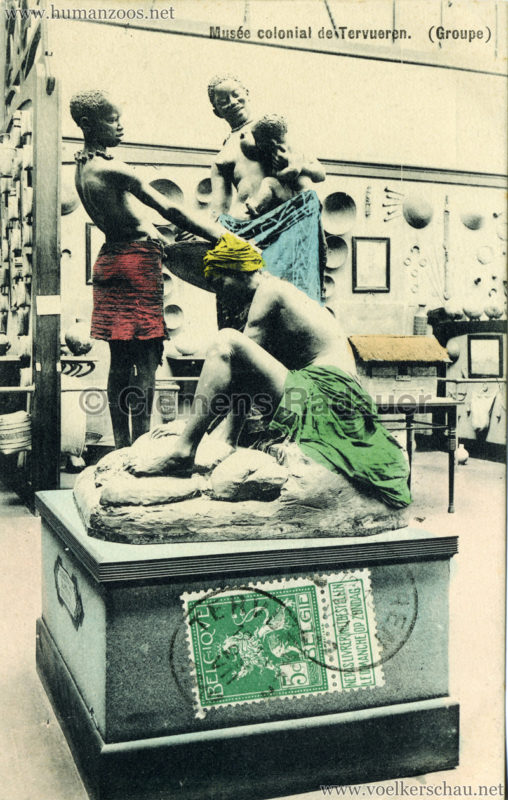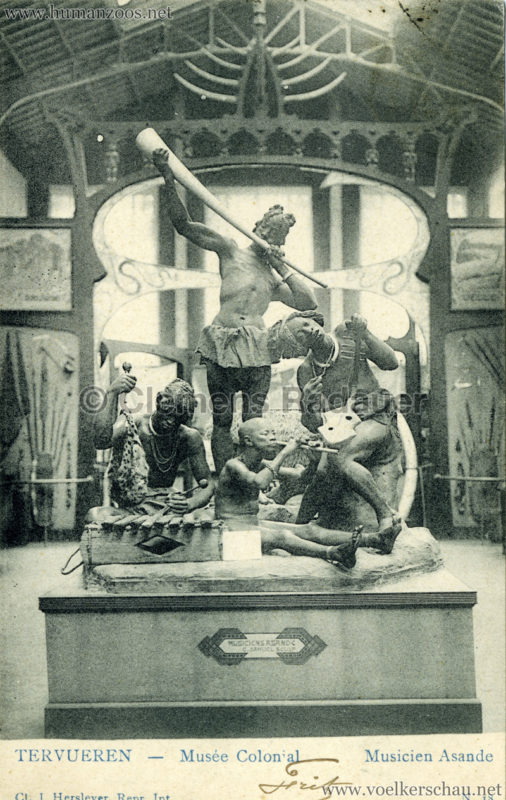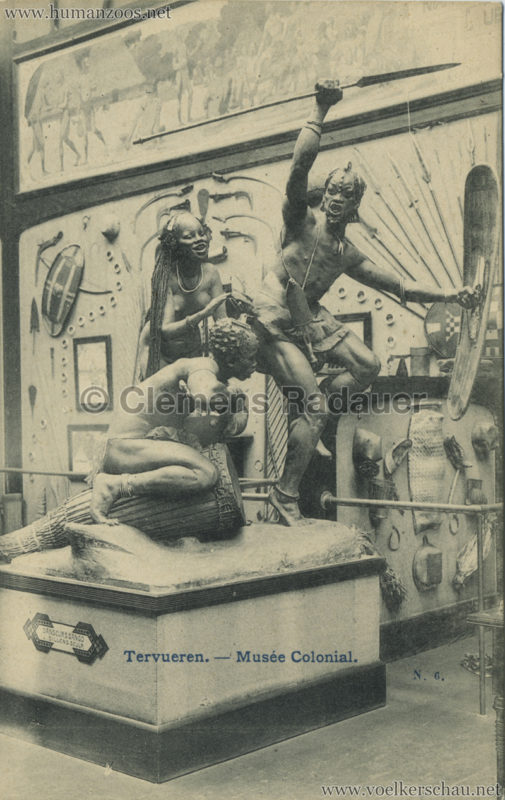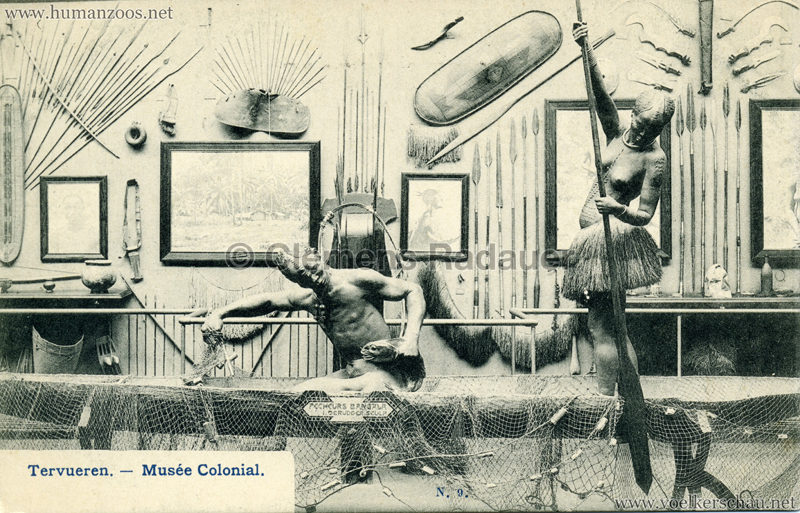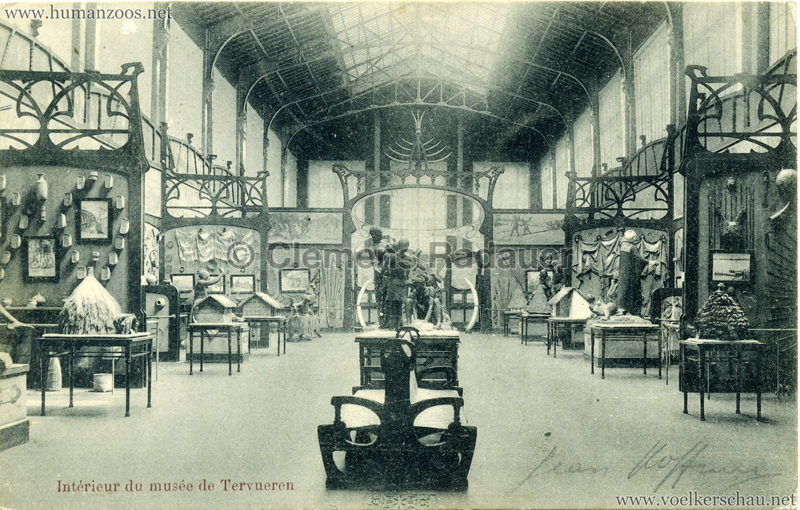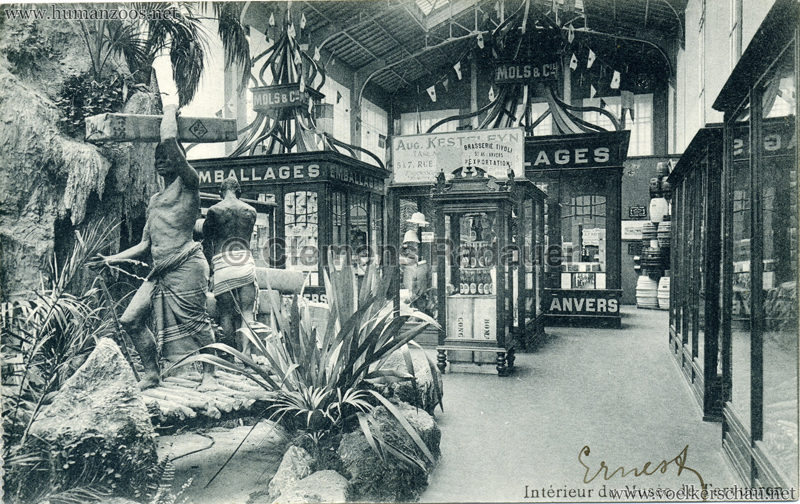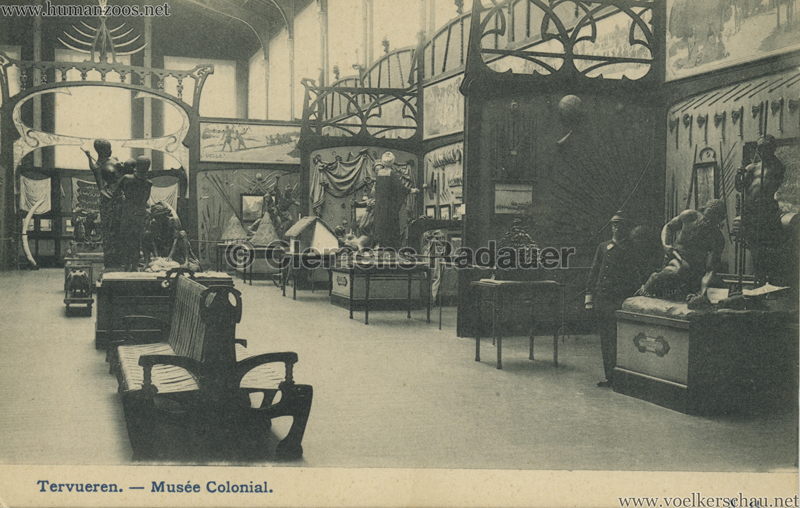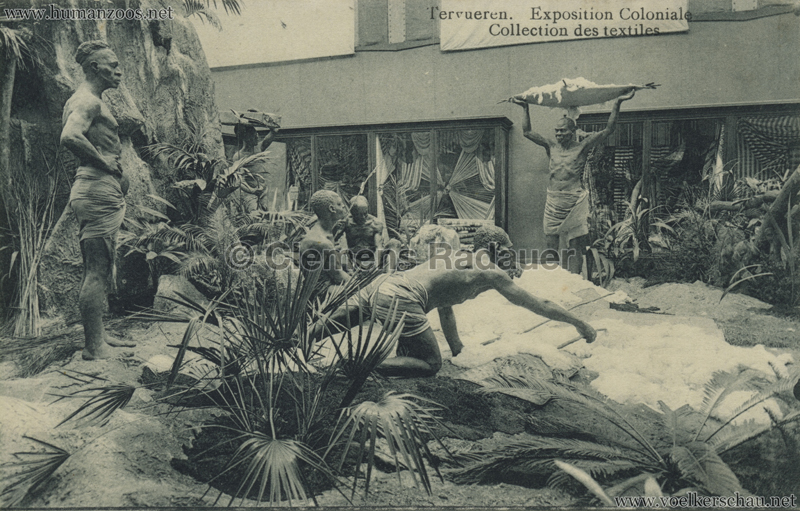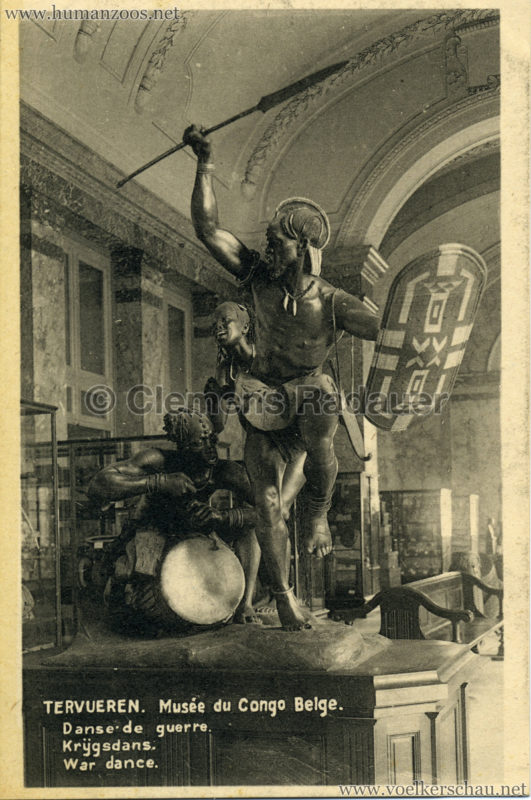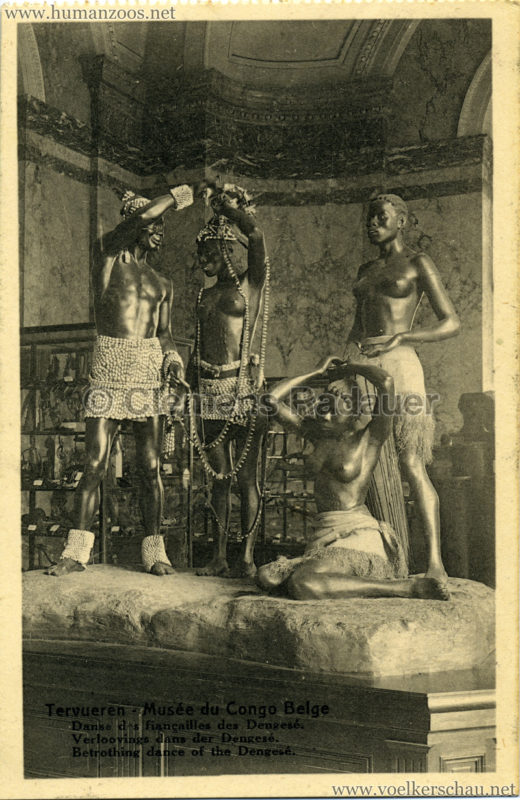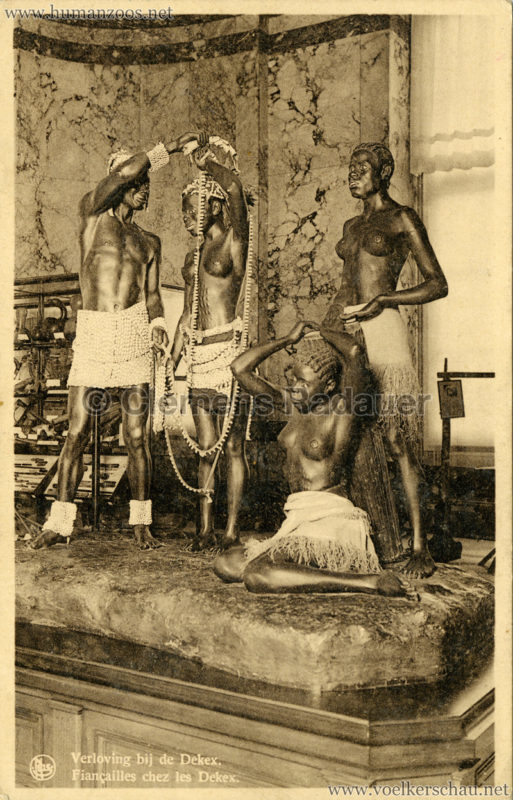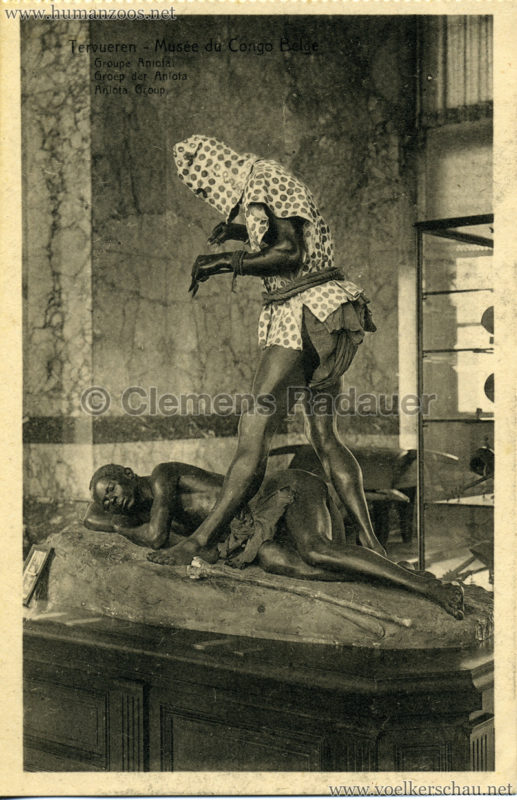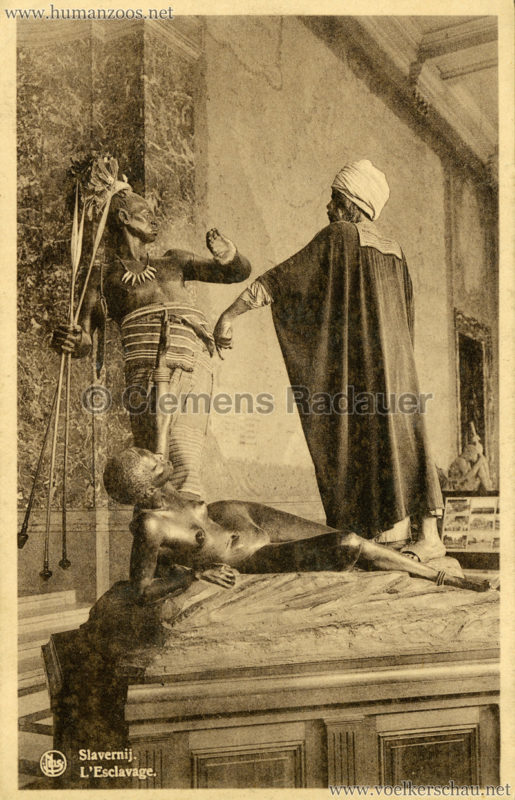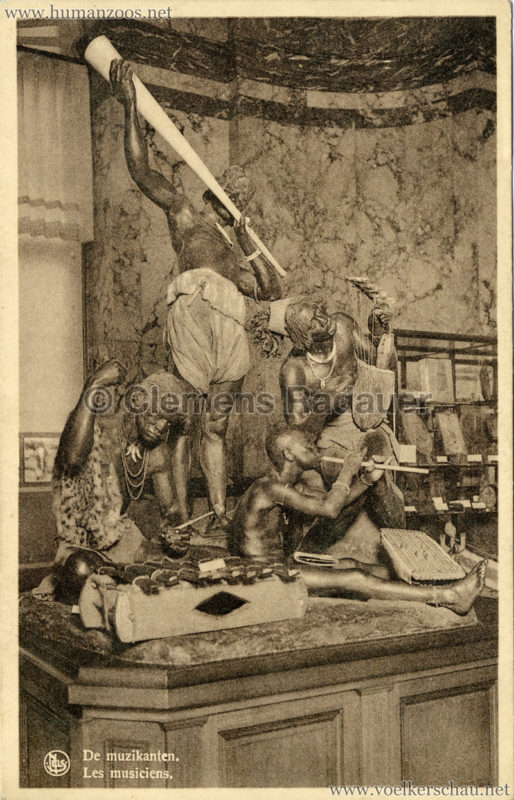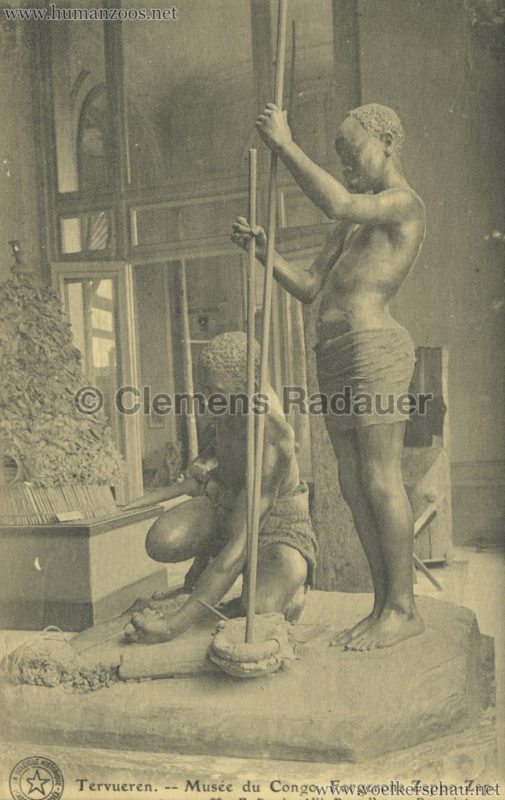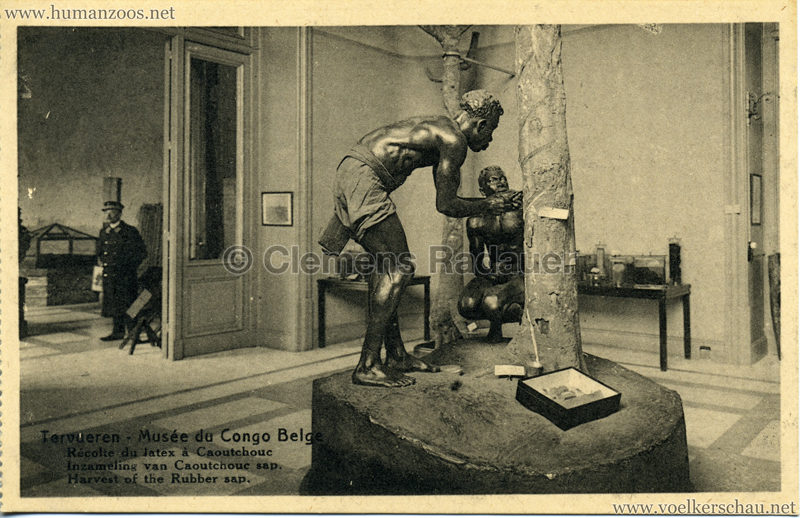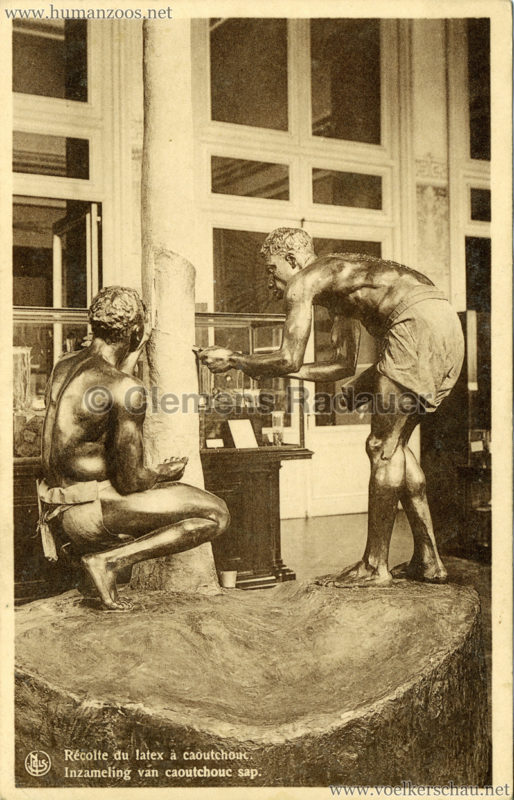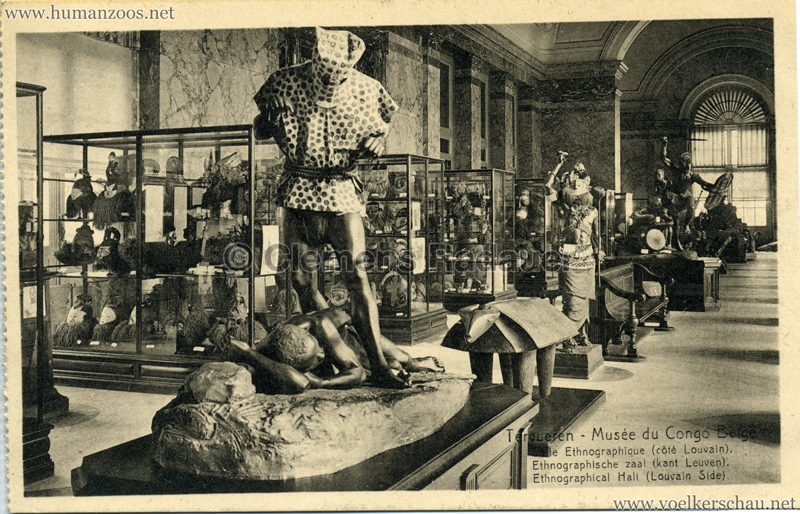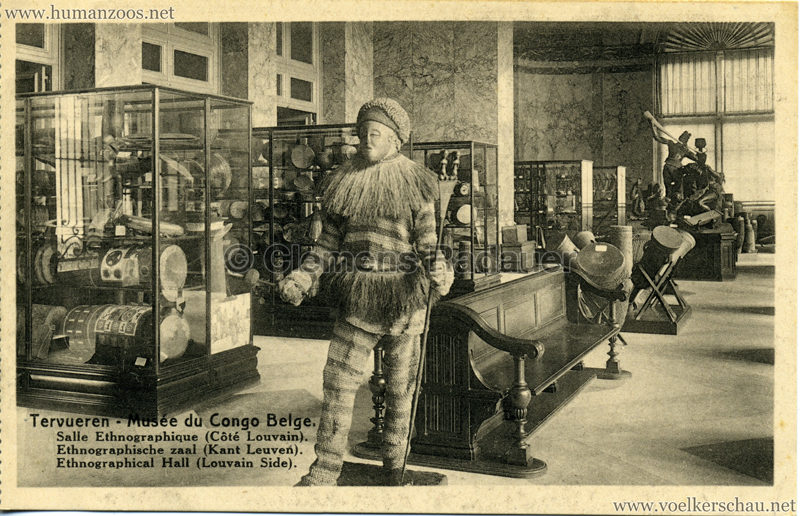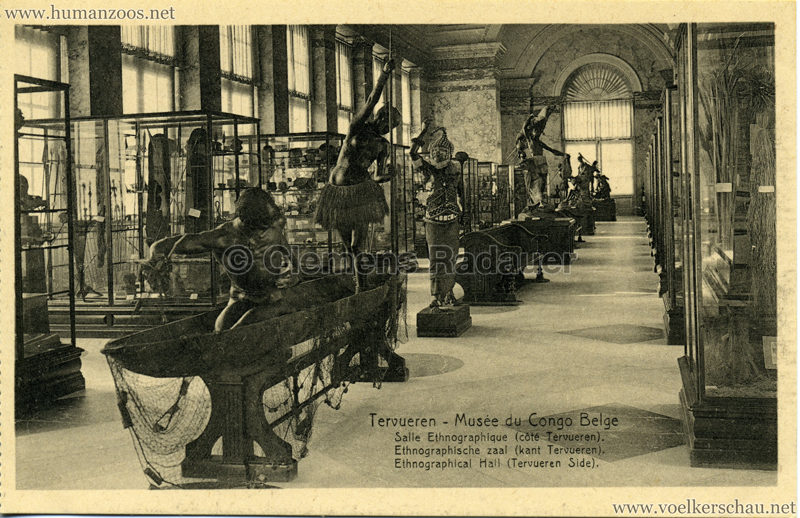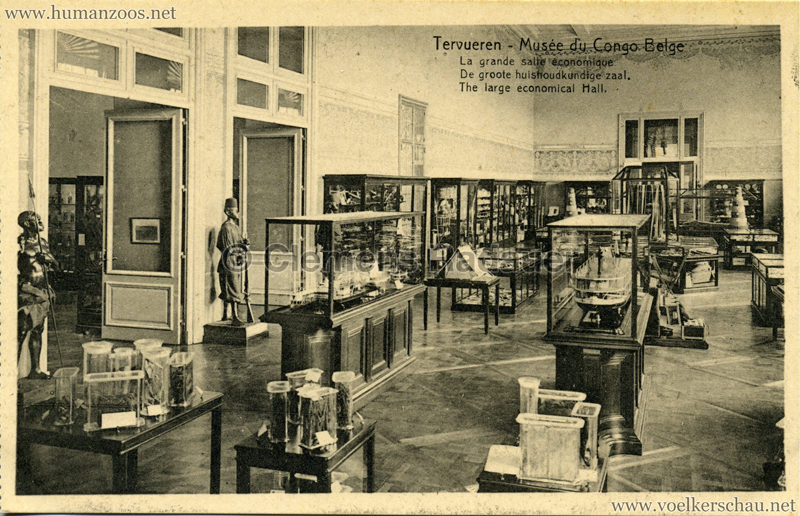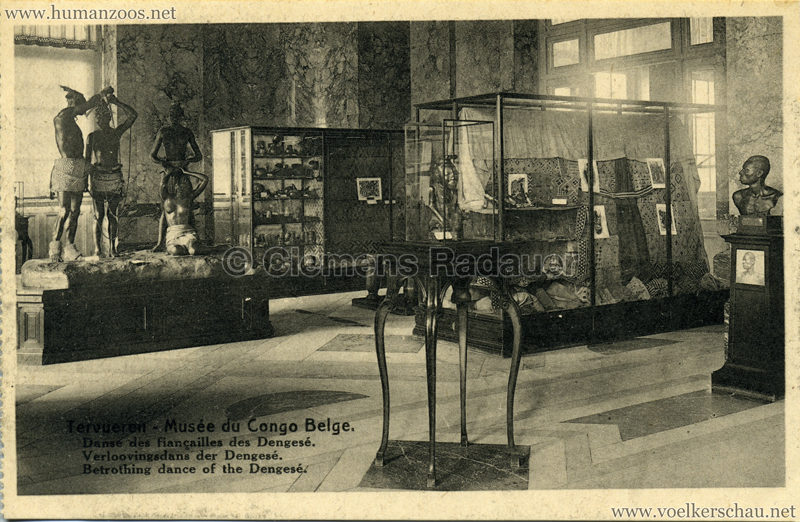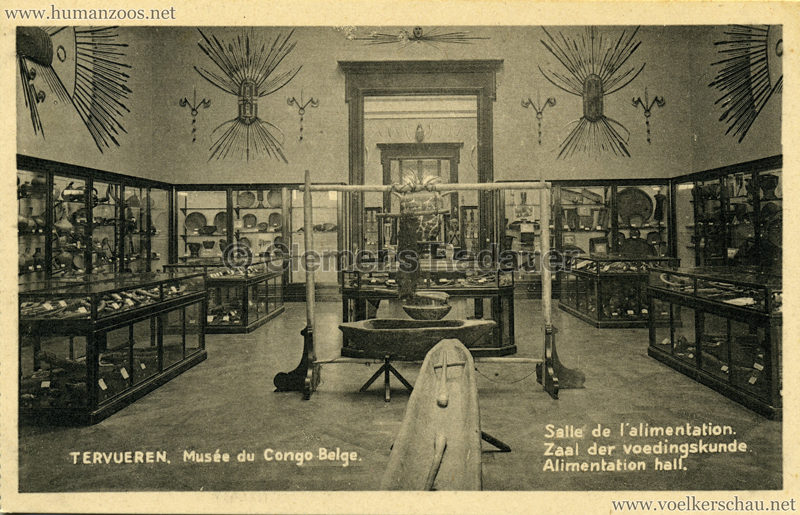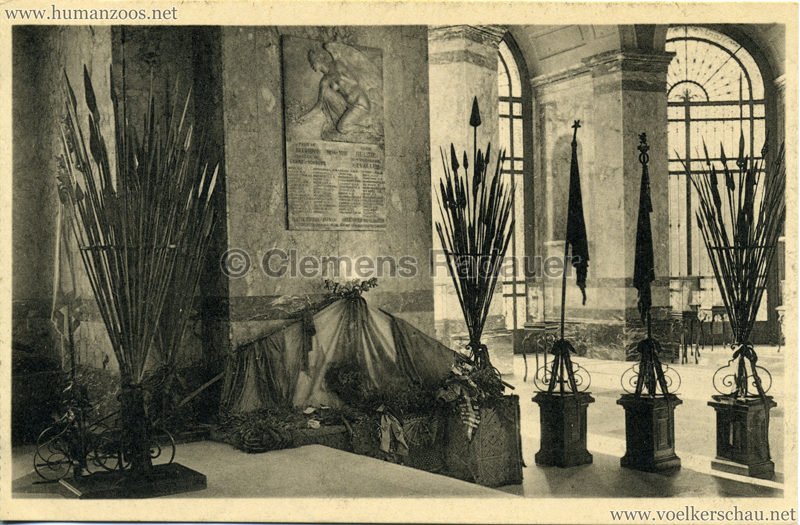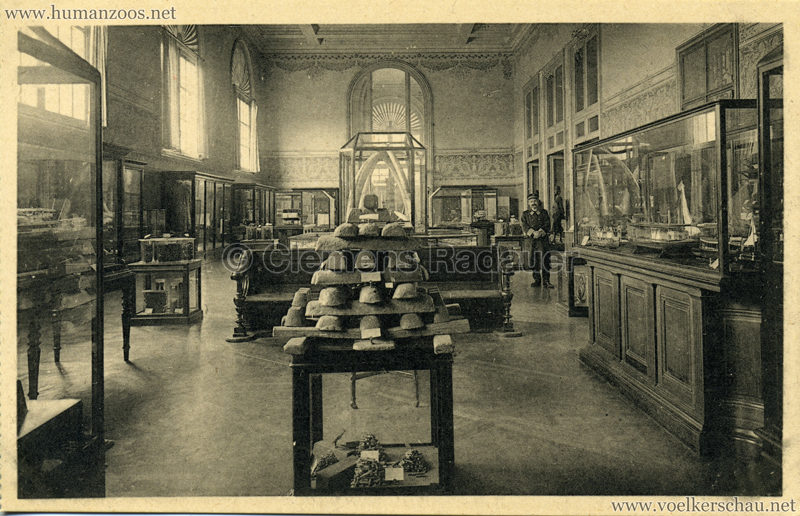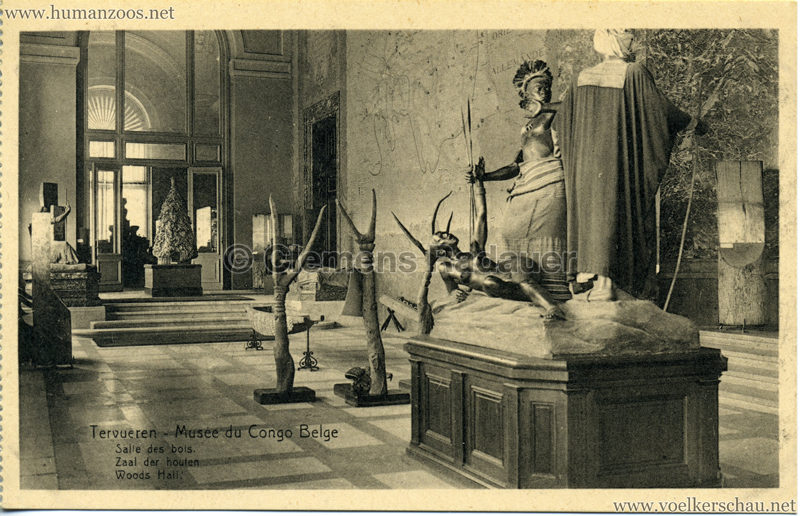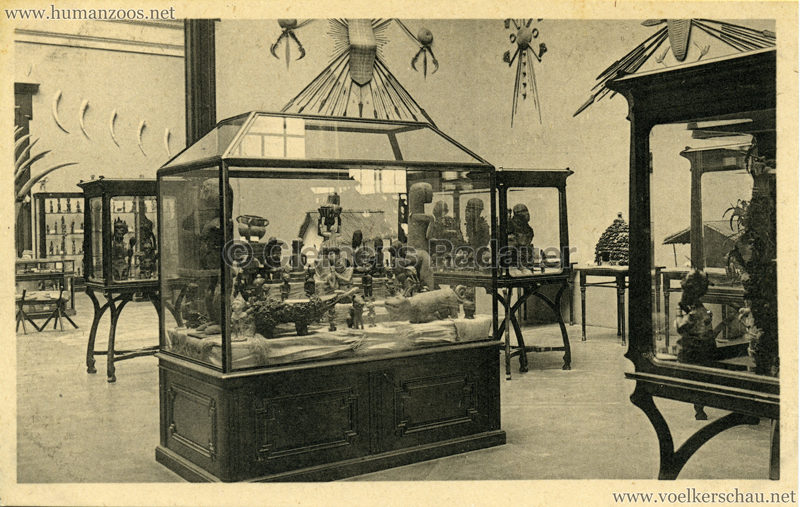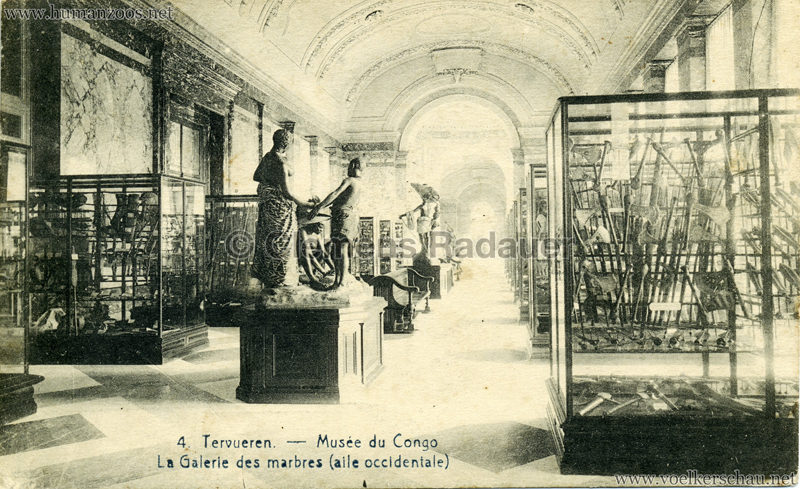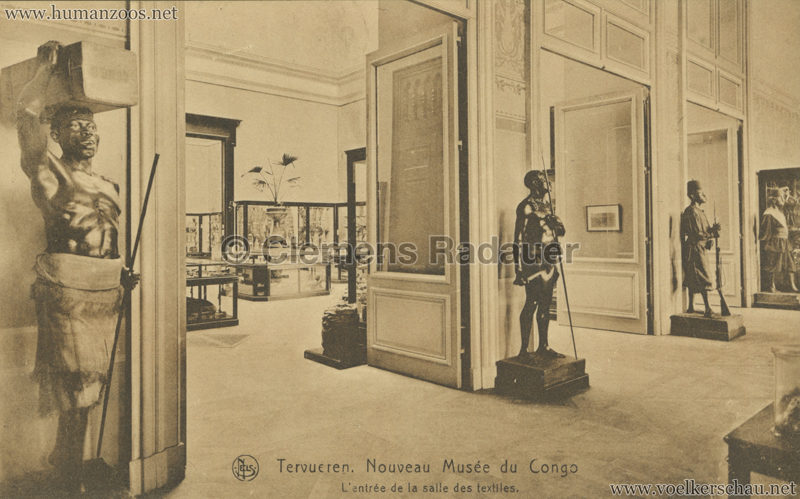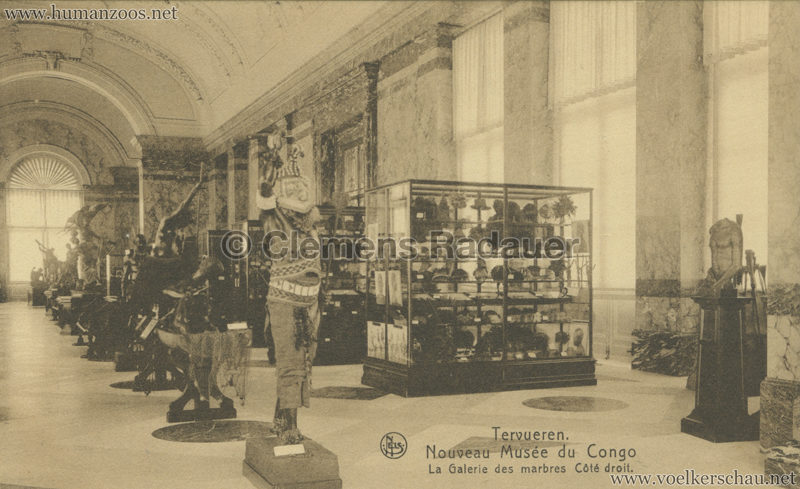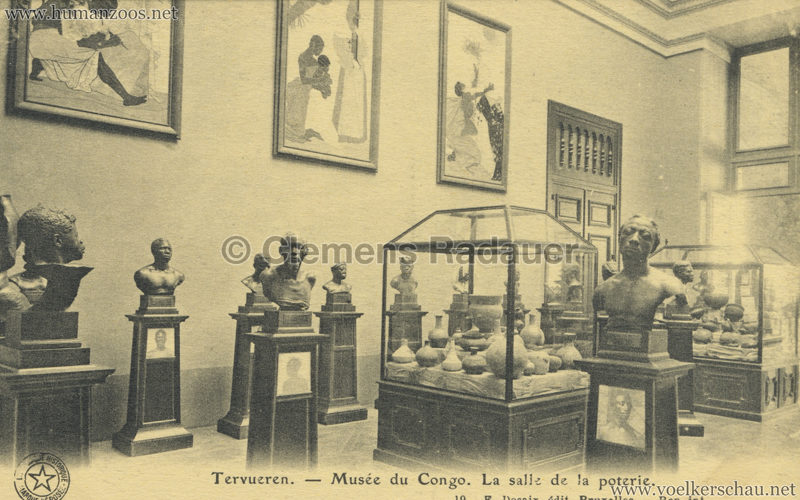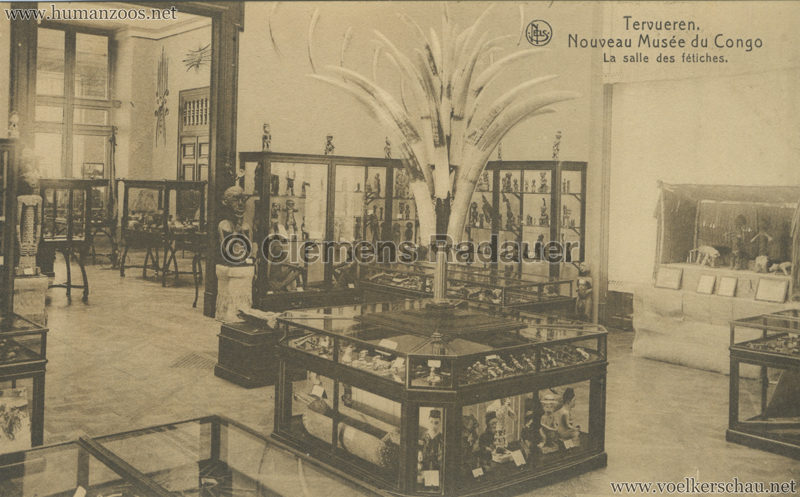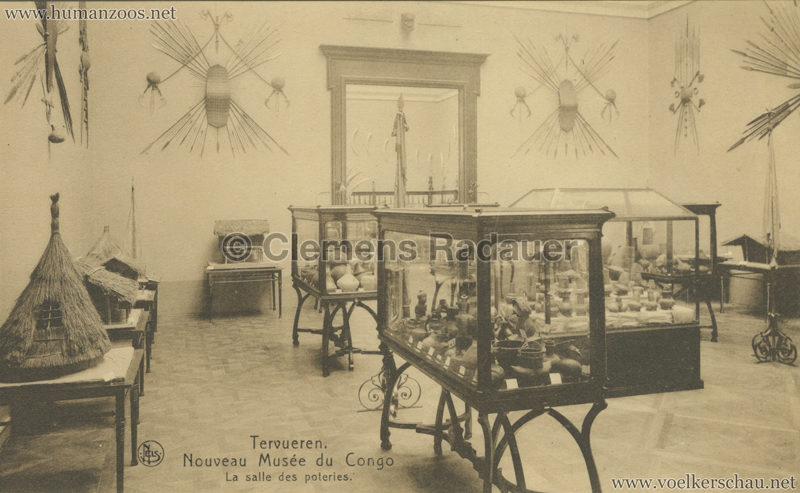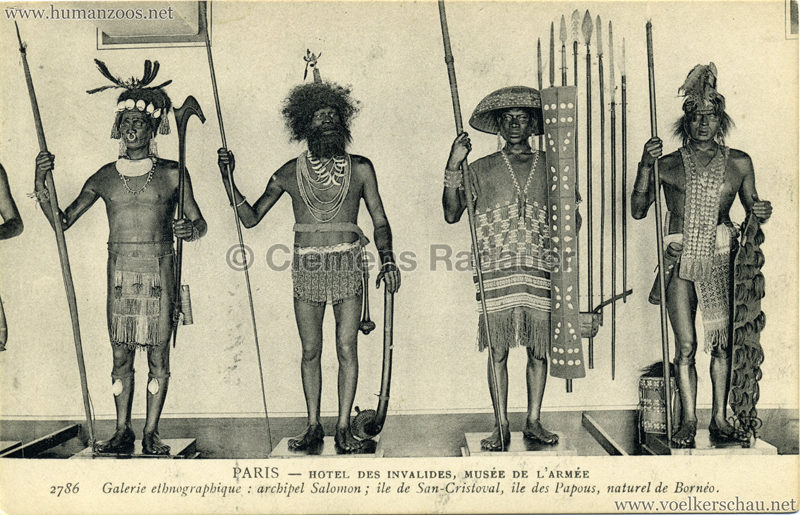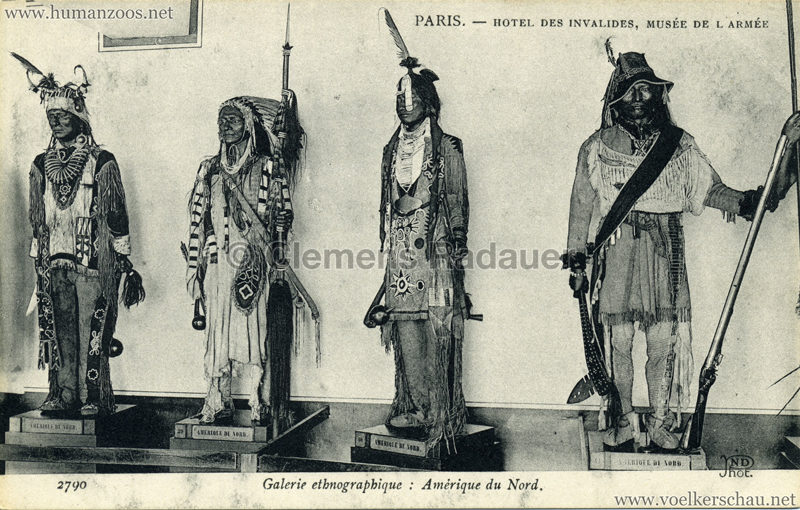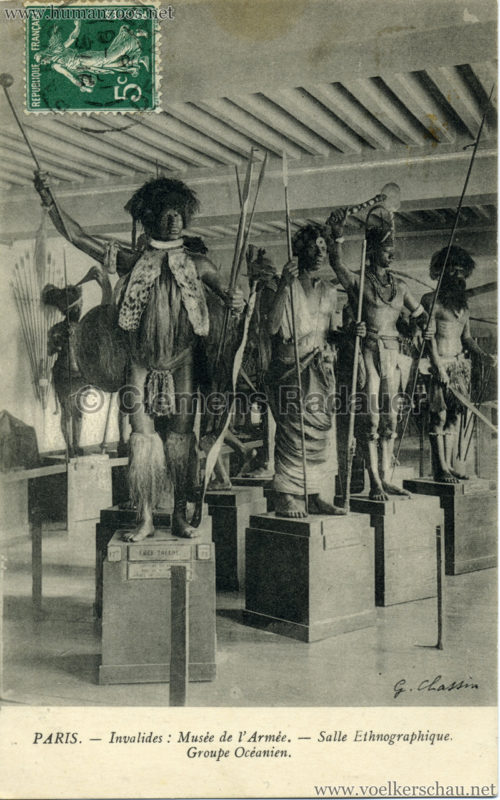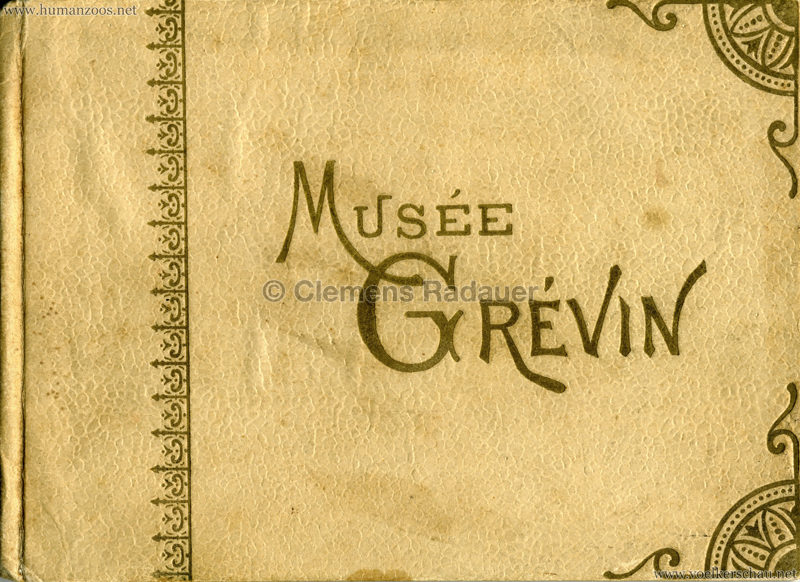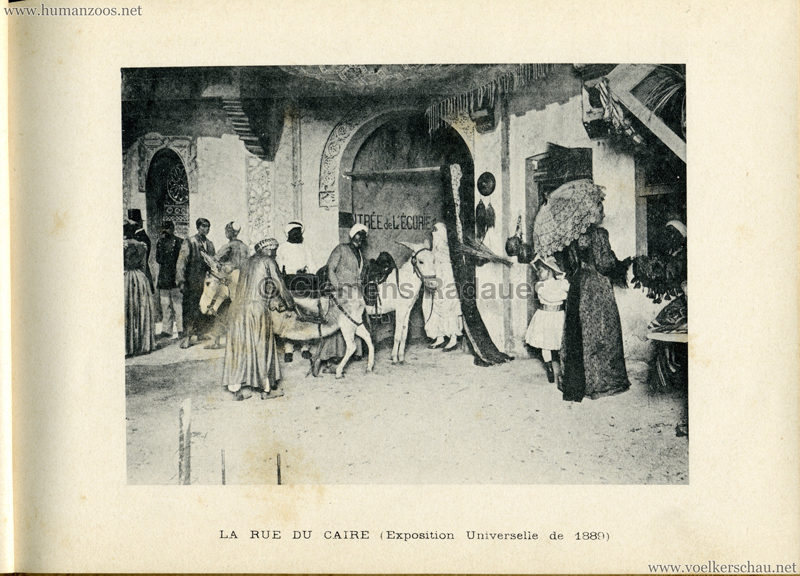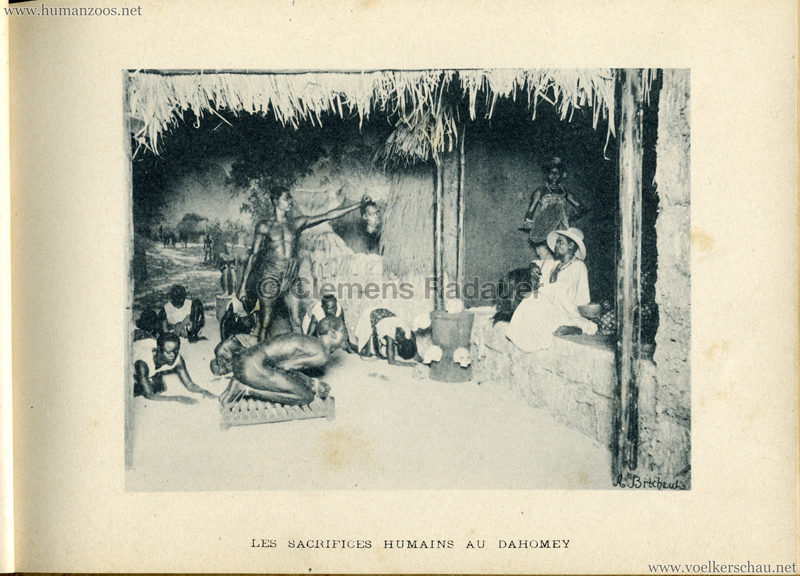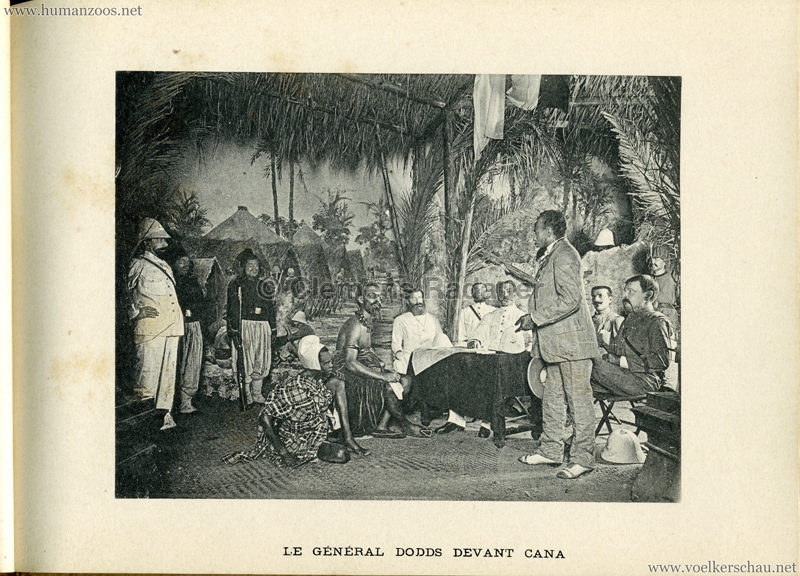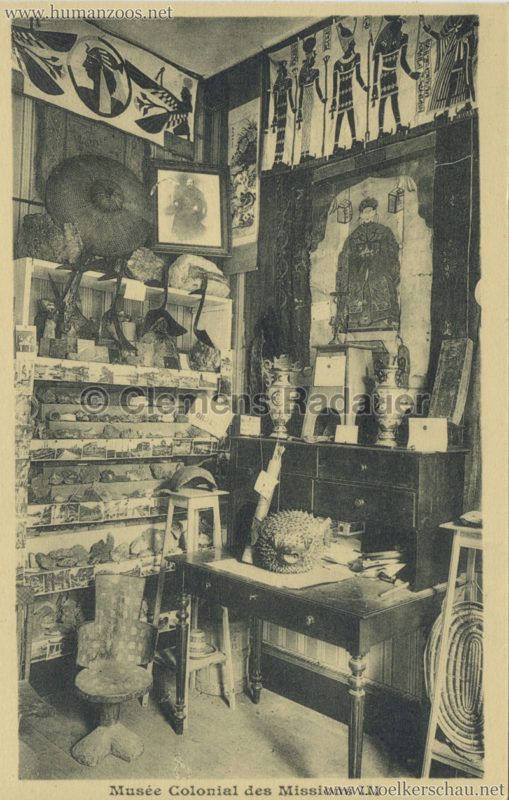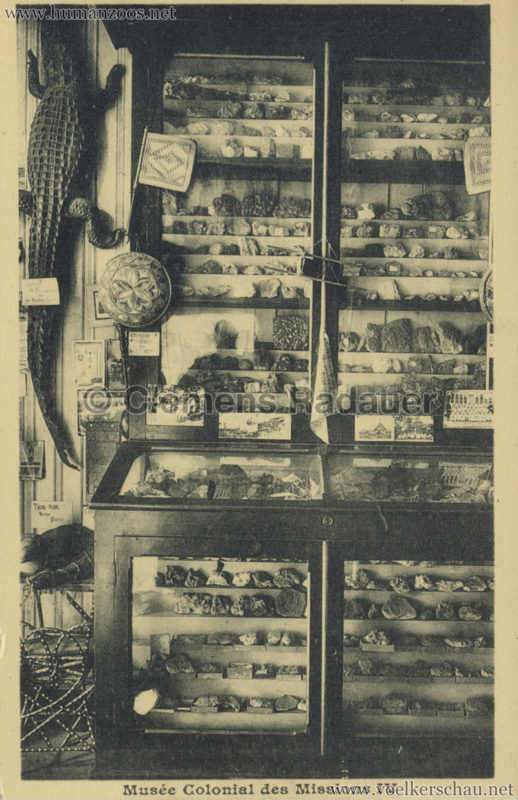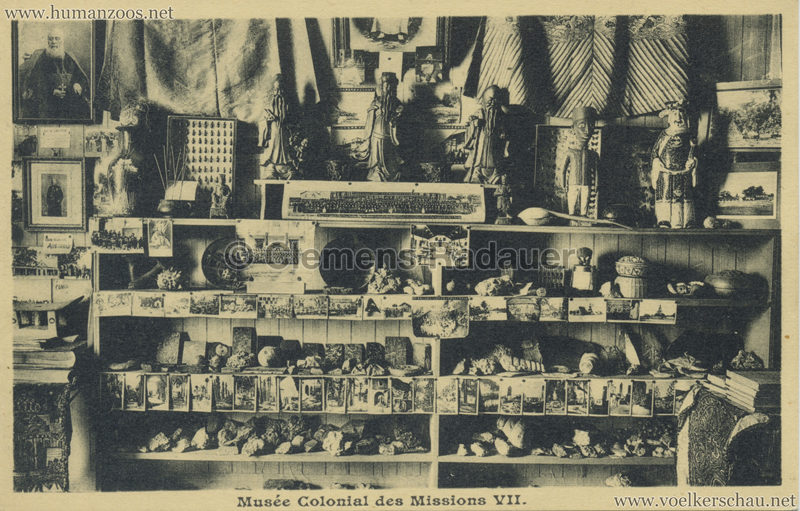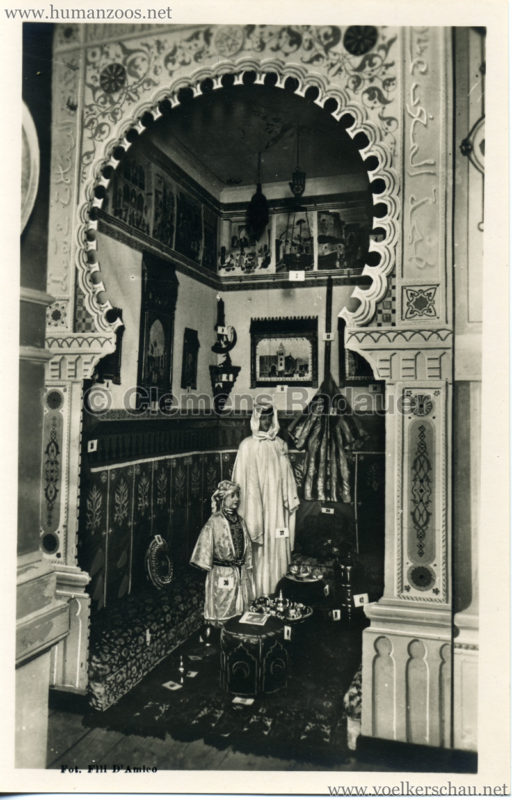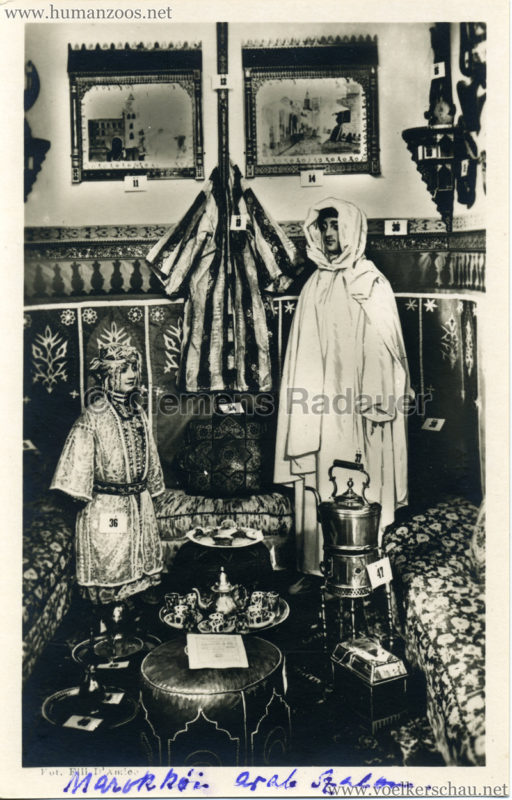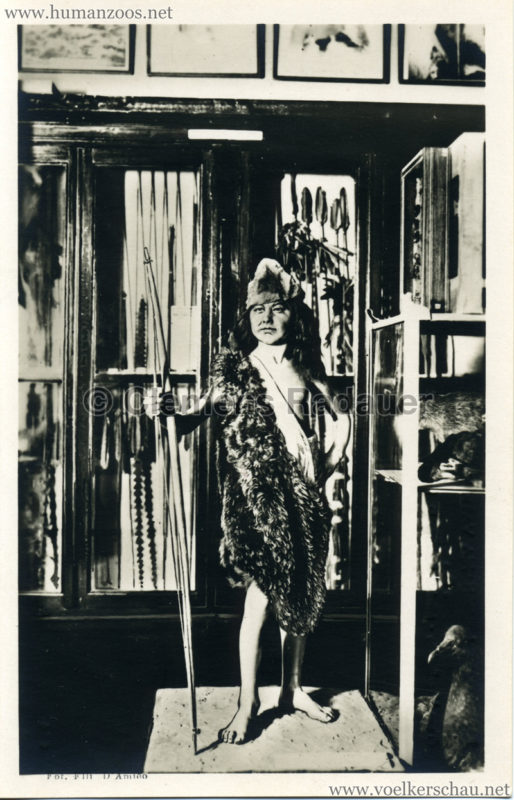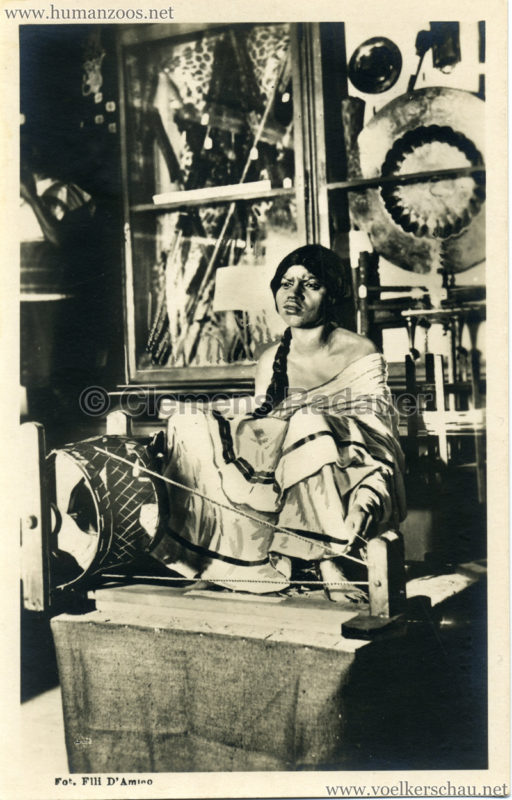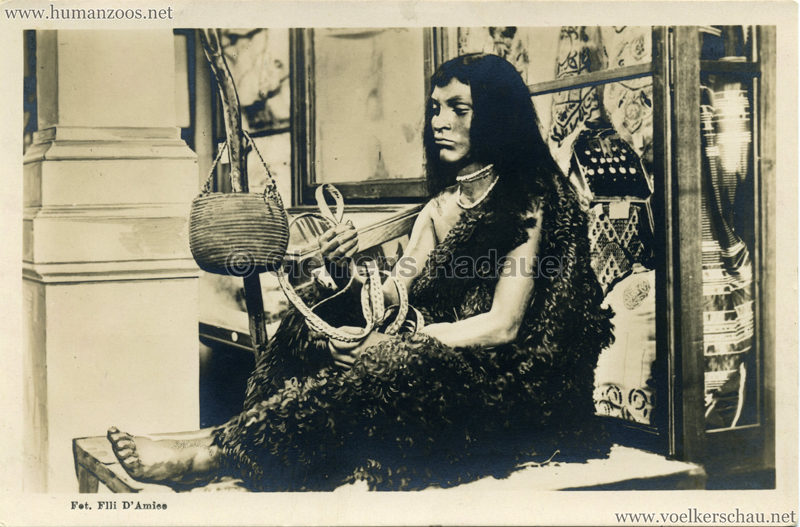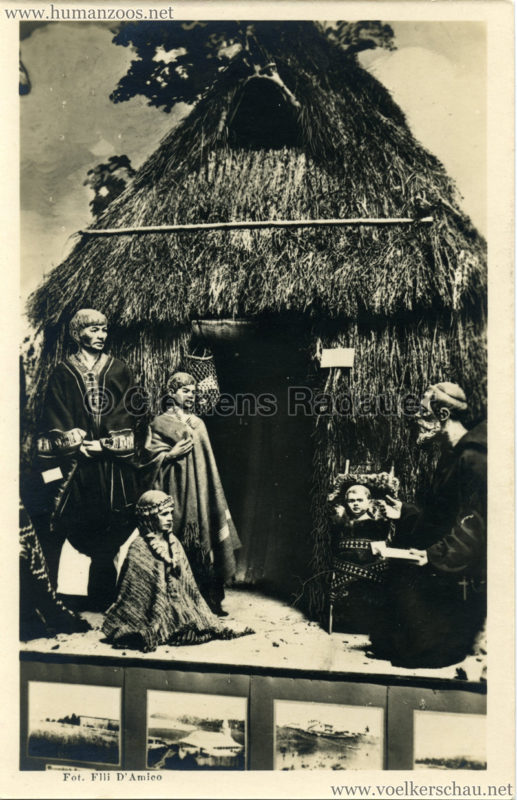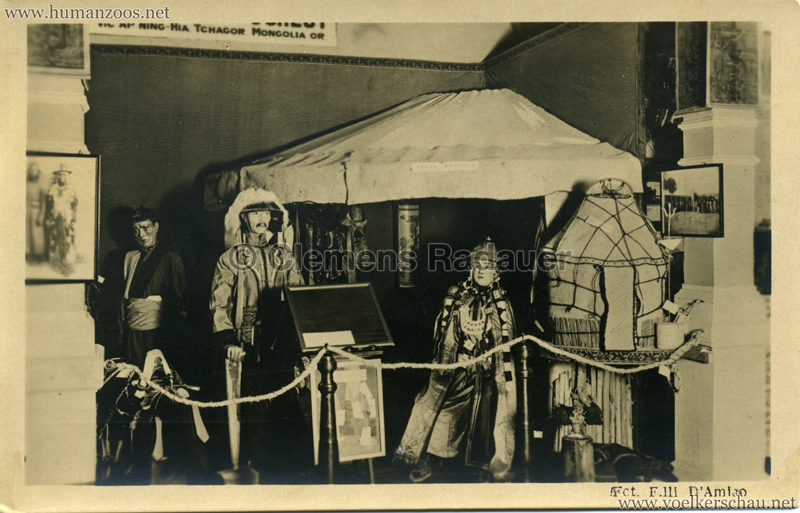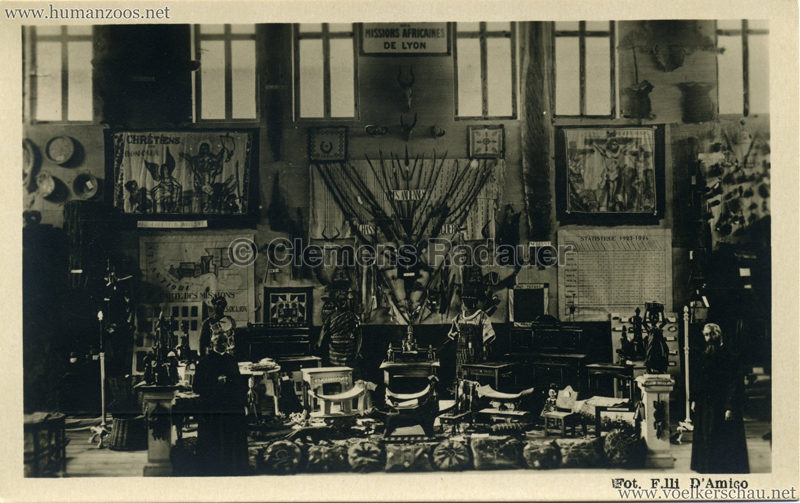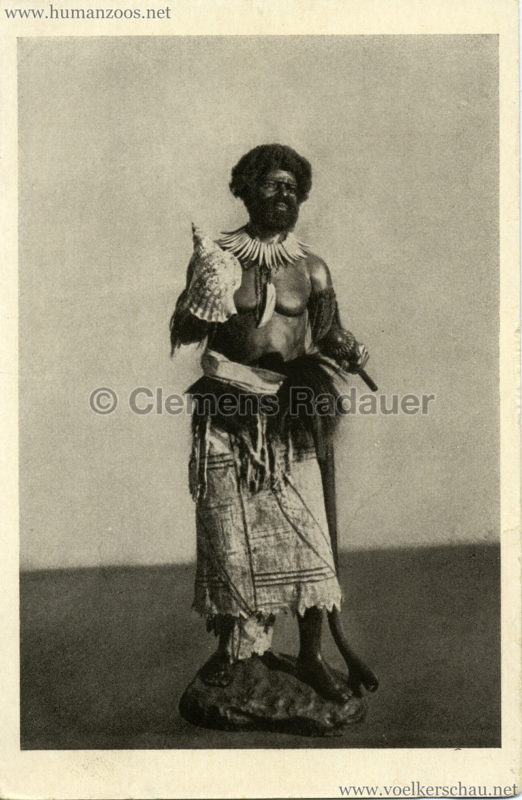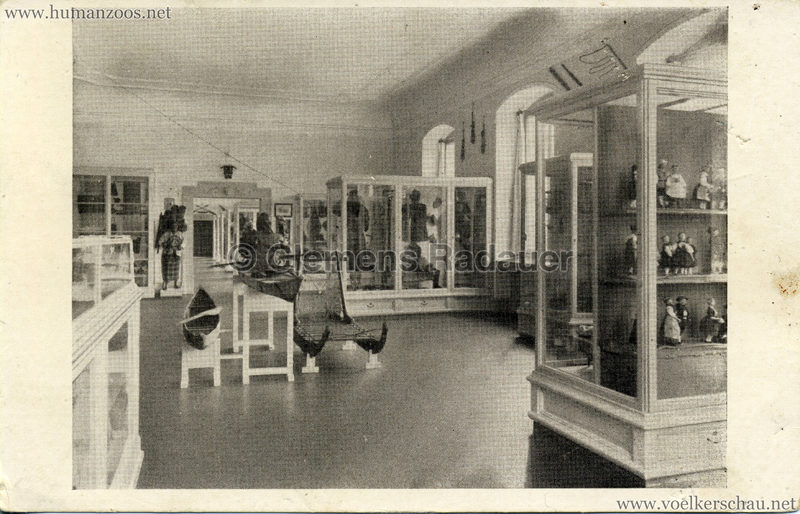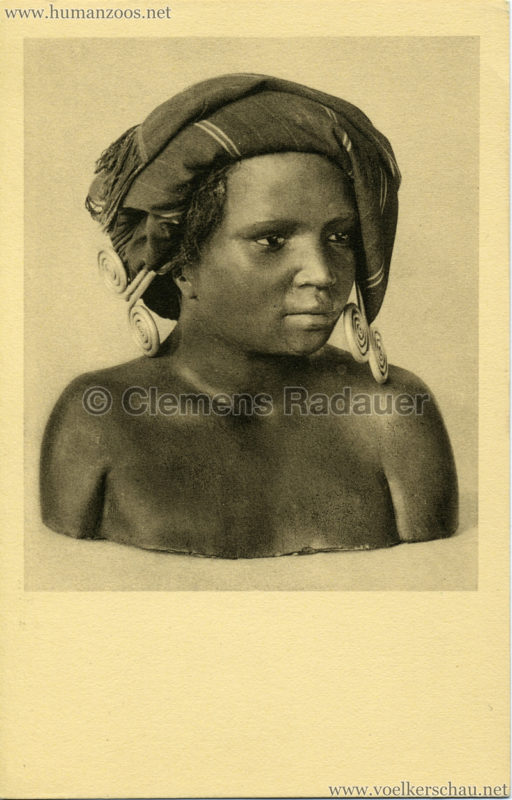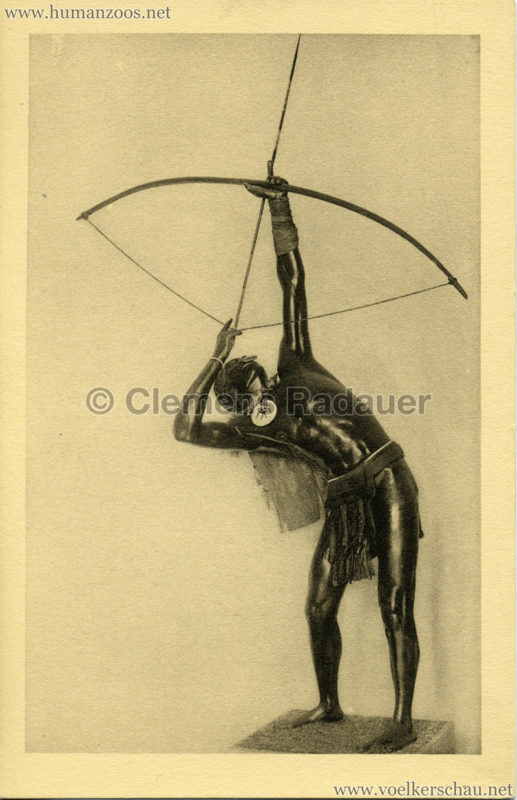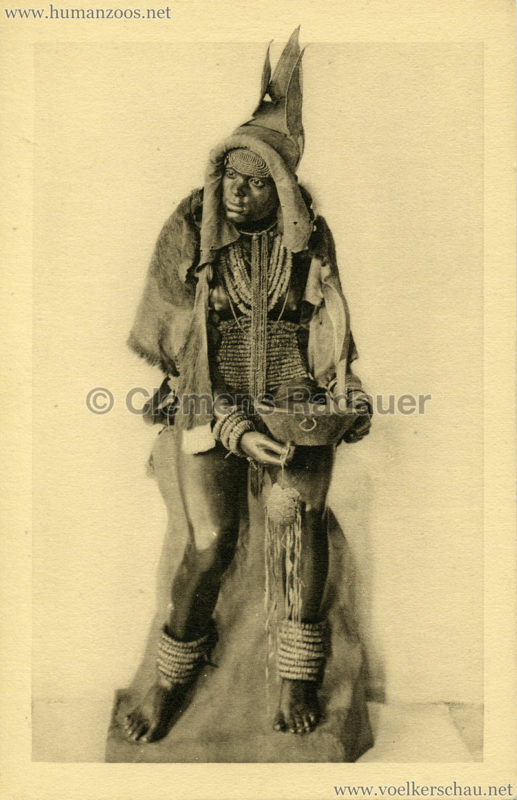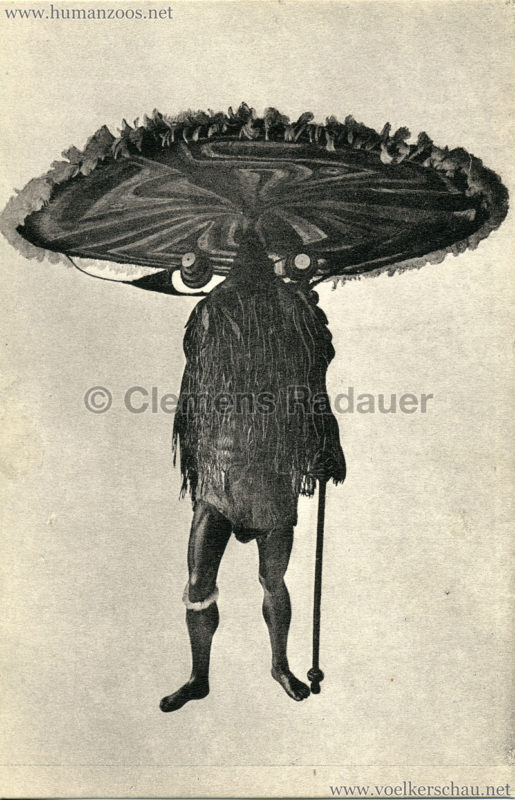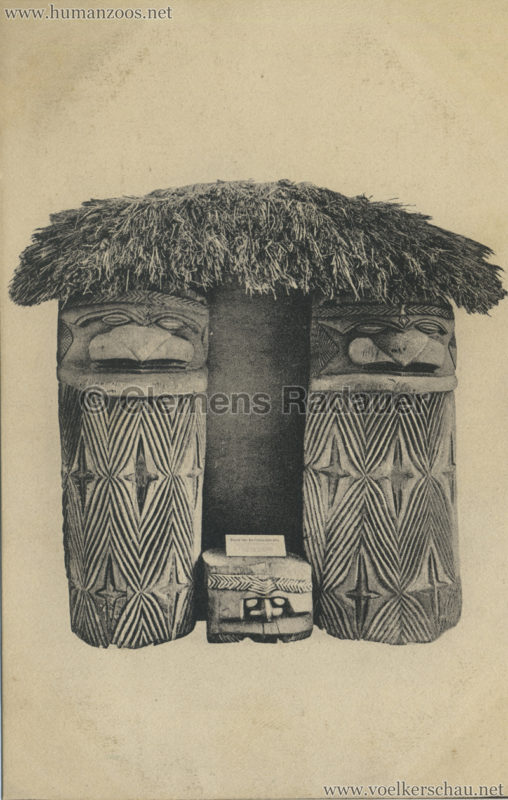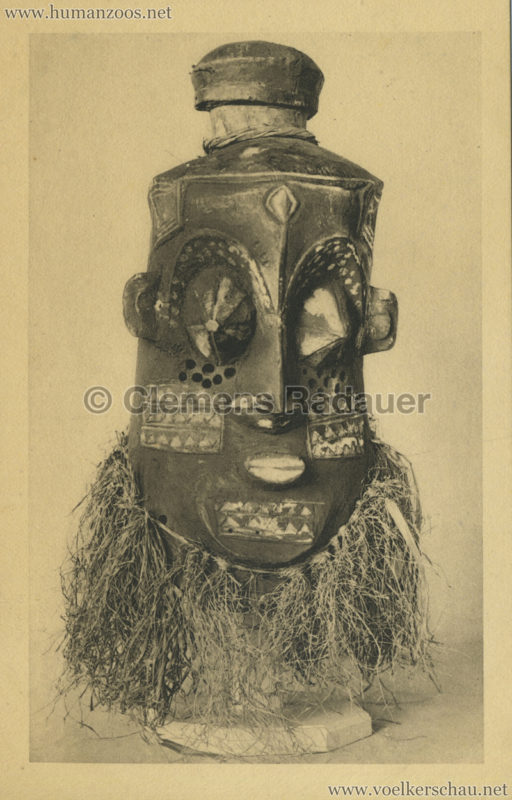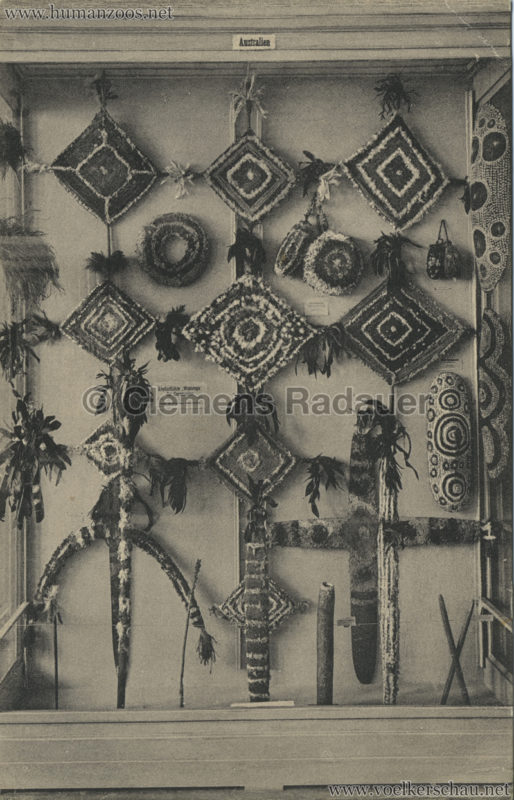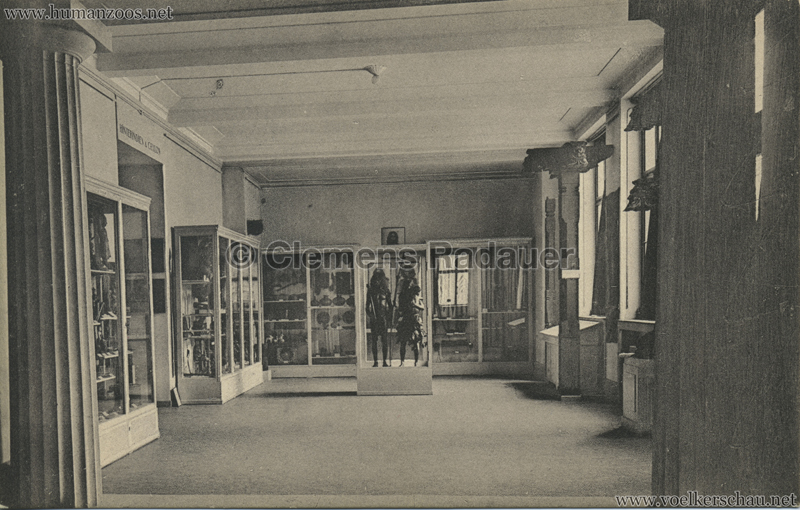Apart from human zoos ethnographic institutions and ethnographic exhibitions contributed to the manifestation of stereotypes in the general public. The way they presented non-Western cultures in their exhibitions forged how these cultures were and sometimes still are percieved.
Ethnographers and ethnographic museums often cooperated with human zoo organizers. Scientists were given the chance to see the human zoos first in exclusive performances and were sometimes also allowed to examine the exhibited people. In exchange the scientists guaranteed the authenticity of the human zoos which was then used to promote the human zoo.
The ethnographic objects used during the performances were sold or given to ethnographic museums after the human zoo was over and thus these are still in the collections of these museums.
These postcards of early ethnographic museums and ethnographic exhibitions show how non-Western cultures were shown.
Ethnographic Museums:
Germany:
The Übersee-Museum is an ethnographic museum in Bremen. It was opened in 1896 under the name “Städtische Museum für Natur-, Völker- und Handelskunde”:
In 1935 it was renamed to “Deutsches Kolonial- und Übersee-Museum” and in 1951 to “Übersee-Museum”:
These three postcards are from the Deutsches Museum in Munich which was founded in 1903. Although its main focus lies on science and technology it also had ethnographic displays:
The Deutsches Kolonial-Museum was a museum in Berlin from 1899 to 1915. Situated in the district of Moabit a large part of its collection were objects that remained after the Gewerbe Ausstellung Berlin and the entailed colonial exhibition were closed in 1896.
postcards:
stereoview:
The Königl. Ethnographisches Museum im Zwinger zu Dresden was founded in 1878. In 1920 it was renamed in Museum für Tierkunde und Völkerkunde Dresden and today is called Museum für Völkerkunde Dresden:
The Linden Museum. Staatliches Museum für Völkerkunde is an ethnological museum which was established in Suttgart in 1911:
The Museum für Völkerkunde Leipzig houses one of the largest ethnographic collections in Germany. Founded in 1869 the museum moved to it’s current location – the new Grassimuseum – in 1929:
The Rautenstrauch-Joest-Museum is an ethnographic Museum in Cologne which was first opened in 1906:
The Weltkulturen Museum was founded in Frankfurt am Main in 1904 as “Städtisches Völker-Museum Frankfurt a. M.”:
Founded in 1935 the Marine- und Kolonialmuseum in Wilhelmshaven was supposed to showcase the power of the German Empire and underpin the German aspirations to regain colonies. It and many of the ethnographic objects were destroyed during Second World War – the remaining objects are on exhibit in the Küstenmuseum Wilhelmshaven.
The Missionshaus St. Kilian in Bad Neustadt a. d. Saale included a museum:
Belgium:
The origin of the AfricaMuseum dates back to the Brussels International Exposition of 1897. After the exposition King Leopold ll decided to found the permanent Musee Colonial in Tervuren in the exhibition pavillon. After a few years the limited capacities of the ‘Colonial Pavilion’ led to the construction of the Museum of Belgian Congo which was inaugurated in 1910. After the independance of Congo in 1960 the museum was renamed into Royal Museum of Central Africa. After an extensive renovation and restructuring of the permanent exhibition it was reopened on the 9th December 2018 as the AfricaMuseum:
Musee Colonial Tervuren:
Musee du Congo Belge:
France:
The musée de l’Armée in Paris was founded in 1905 and used to show ethnographic exhibits:
The Musée Grévin is a wax museum in Paris and was founded in 1882. This 24 page booklet from around 1900 shows the main dioramas (“principaux tableaux”) of the Museum and mostly includes historcal scenes but also two scenes from the Exposition Coloniale de Paris 1889 and two colonial scenes:
The Musée Colonial des Missions:
Italy:
An important part of the Esposizione Missionaria Vatikana which was held in Rome in 1925 were ethnographic dioramas. After the huge success of the exhibition Pope Pius XI decided to open a permanent ethnographic museum (Ethnological Museum):
Switzerland:
The Historische und Völkerkundemuseum St. Gallen was opened in 1921 and is one of the most important historical and ethnographic museums in Switzerland:
Although founded in 1893 the ethnographic collection of Basel was only named Museum für Völkerkunde in 1918. With more than 320.000 objects and 50.000 photographs it is one of the most important ethnographic collections in Europe. Since 1996 it is called Haus der Kulturen Basel:
The Historisches Museum Bern (Bern Historical Museum) was opened in 1894 and has an ethnographic collection of about 60.000 objects:
